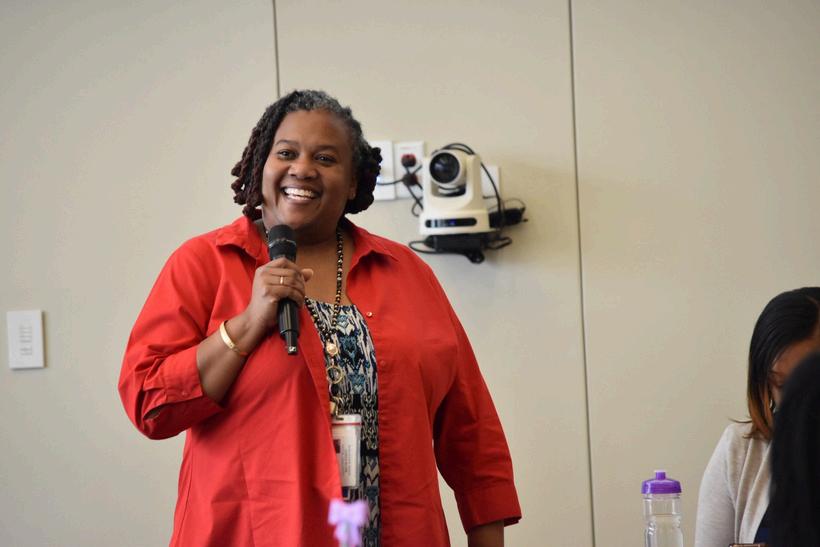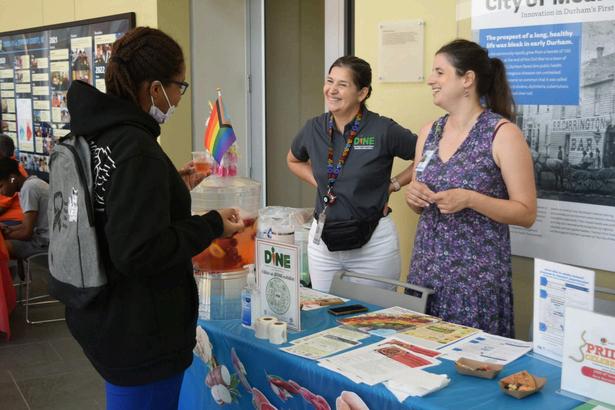

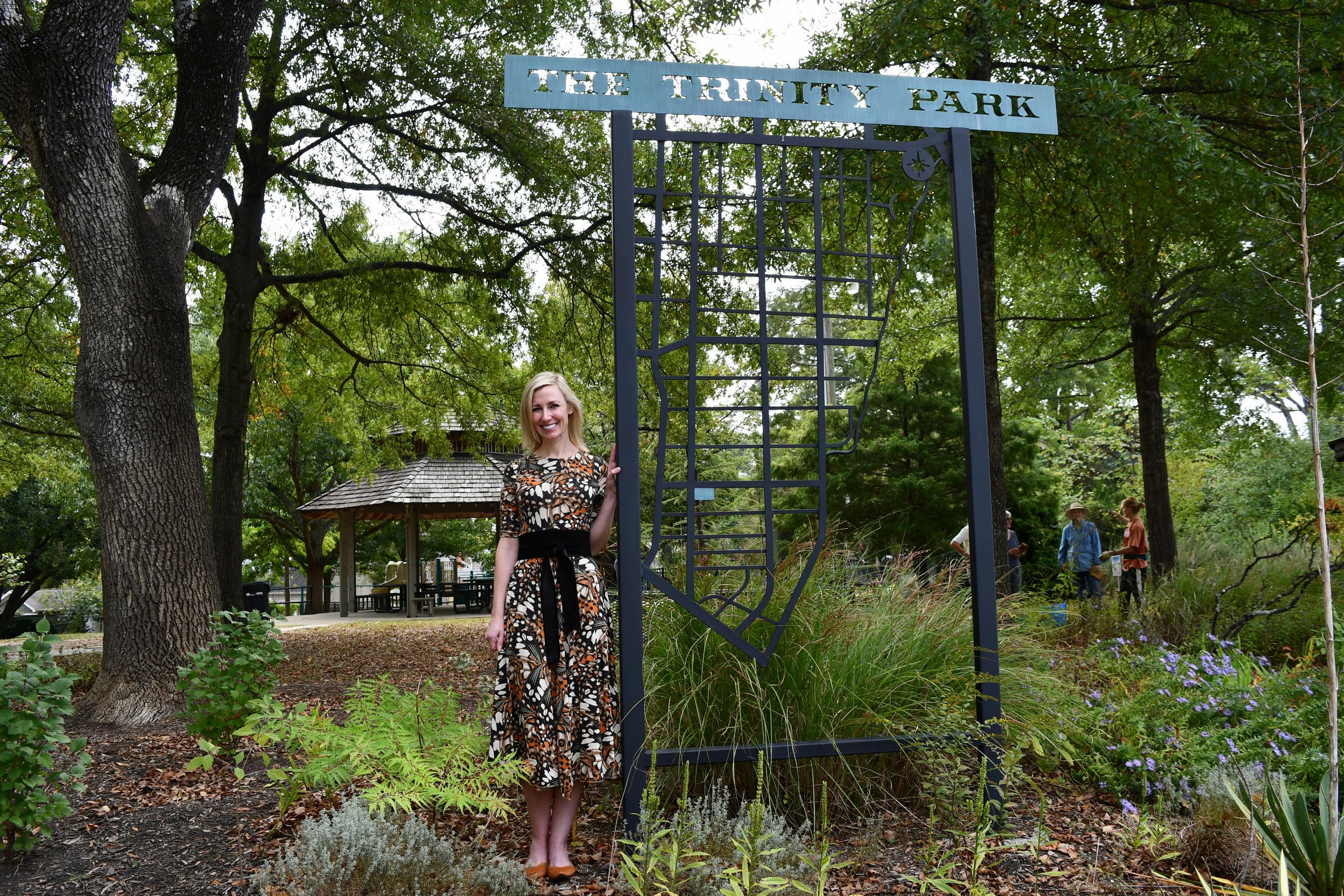





Legacy Lives Here:

Honoring DCo’s Native Durhamites


A growing bond with the school community reflects both passion for service and pride in Durham



Employees embrace alternative commutes to work

Hello, DCo! When I chose a career in public service, I knew I was embarking on a path that would be both rewarding and challenging. What I didn’t fully appreciate then was how profoundly meaningful it would become – how each day would bring with it a sense of purpose, a chance to make the lives of others better, and the privilege of serving alongside remarkable people dedicated to the same mission.
That’s why I want to take this moment to thank each and every one of you who has chosen this path of public service with Durham County.
Public service isn’t always easy. It requires dedication, patience, and resilience It means showing up on difficult days, navigating complex challenges, and sometimes making sacrifices that others may never see. Yet, you do this work because you understand something fundamental: that the services we provide aren’t just tasks to complete –they’re lifelines, safety nets, and foundations that our community depends upon.
To everyone across our organization – from our public health teams to our library staff, from our social workers to our facilities crews, from our technology experts to our planning professionals, and from our accountants and admin staff to our EMS workers and student nurses – I say, thank you.
Each role matters. Each contribution counts. Together, we form a network of care and service that touches every corner of our diverse community we call Durham County.
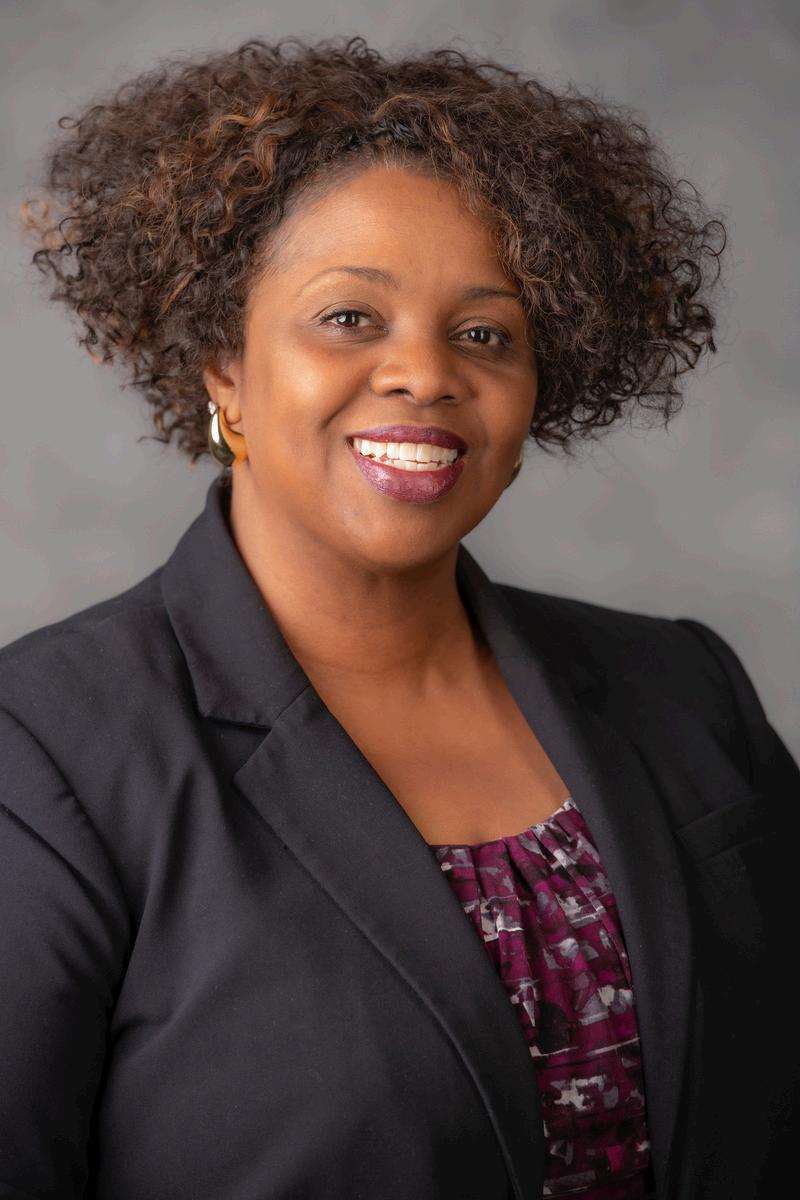
This edition of DCo Life magazine is a tribute to all of the hardworking employees of Durham County Government. I’m especially happy to see the highlighting of Durham natives. Those who have chosen to serve the community they grew up in!
We highlight some of the great ways that we – as people – have fun outside of the office. How we cook, how we play, how we serve There’s even a fun feature on getting to work in something other than a car and so much more!
Choosing public service means choosing to be part of something larger than ourselves. It means waking up each morning with purpose, knowing that our work has meaning and impact. It means being part of a team that, even with all its challenges, makes our community stronger, healthier, and more connected
Thank you for making that choice Thank you for your dedication, your expertise, and your heart. Thank you for being part of the Durham County family and for making me proud every day to serve alongside you.
Claudia O. Hager | County Manager







Stay in the Know with All Things DCo!
Want to stay in the loop with what's happening at DCo? “News You Can Use” your bi-weekly update, by and for DCo employees, has you covered! Delivered straight to your inbox, it’s packed with news, updates, events, and everything you need to stay connected!
Do you have news you would like to see included in “News You Can Use”? Email your submission by 5 p.m. on the Monday before the release of the next edition. Send your submissions to public information@dconc.gov or adwatson@dconc.gov.

DCo Talks 2.0 is an employee-led program designed to foster connection, conversation, and community among Durham County Government employees. Sessions provide a welcoming space for employees to share experiences, exchange ideas, and engage in meaningful discussions. LET’S TALK! JOIN THE MONTHLY ENGAGING DISCUSSIONS!
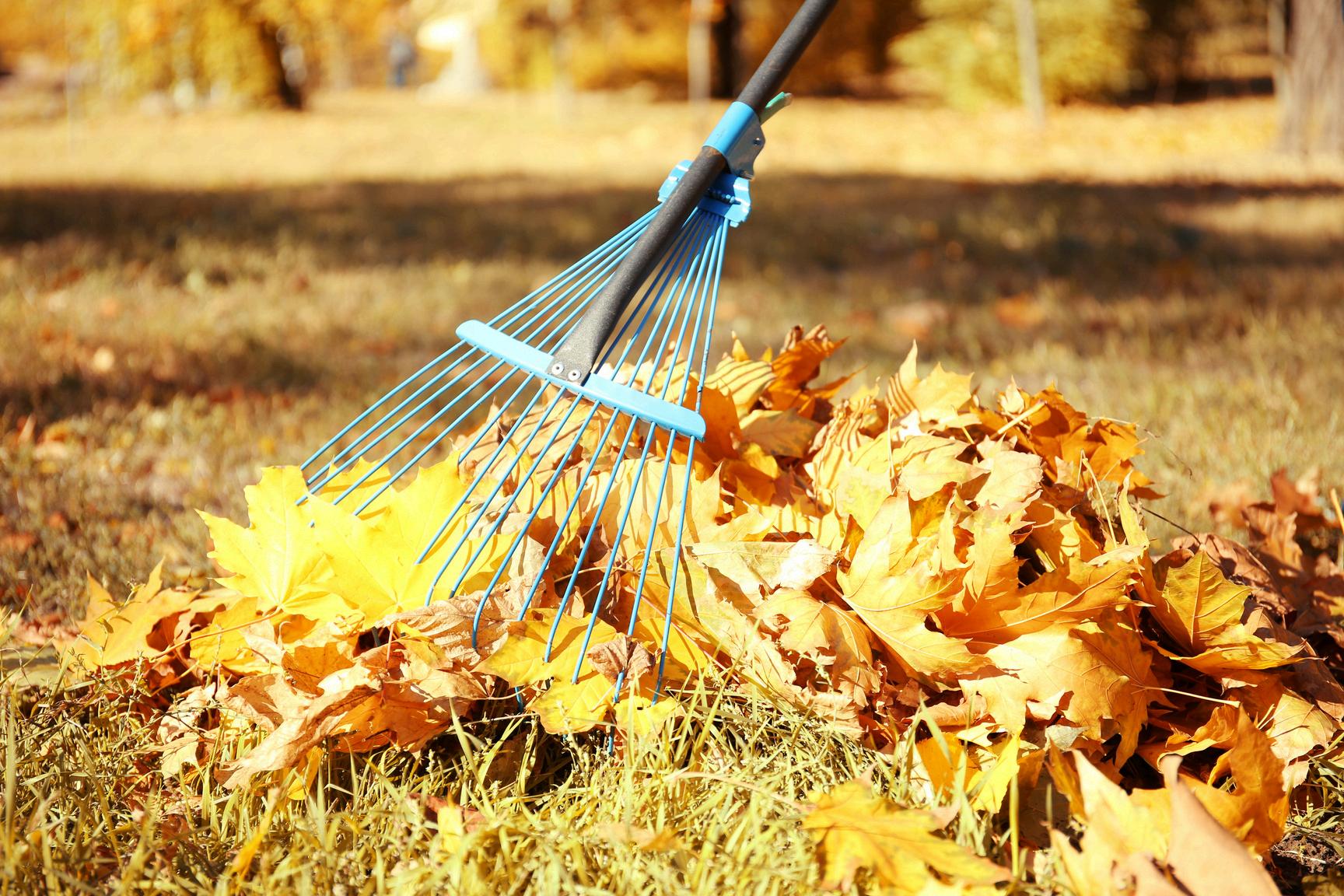
Fall is a season of change – and a reminder that what we do in our kitchens, yards, and neighborhoods can ripple outward to support the health of both people and pollinators!
Here are a few helpful changes you can make:



Eating with the Seasons: When we eat locally with the seasons, we enjoy fresher produce, support local farmers, and reduce the energy it takes to transport food long distances Think crisp apples, hearty greens, and colorful squash BIG IDEA: Visit your local farmers market or co-op!
Planting with the Seasons: Pollinators are responsible for one in three bites of food we eat! The same seasonal wisdom applies to our yards and green spaces. Planting with the seasons helps pollinator-friendly flowers, native trees, and shrubs take root more successfully, setting them up to thrive year after year and help feed the pollinators… who help feed us. BIG IDEA: Grow native plants that have staggered bloom times and diverse flower shapes!
Leaving the Leaves: Perhaps the simplest action of all; leave the leaves. Instead of bagging them, let them rest where they fall or mulch them into garden beds. Those fallen leaves enrich our precious soils as they decompose, as well as provide vital shelter for pollinators who overwinter in those leaves BIG IDEA: Don't have a yard? When possible, share wisdom about leaving the leaves with others!
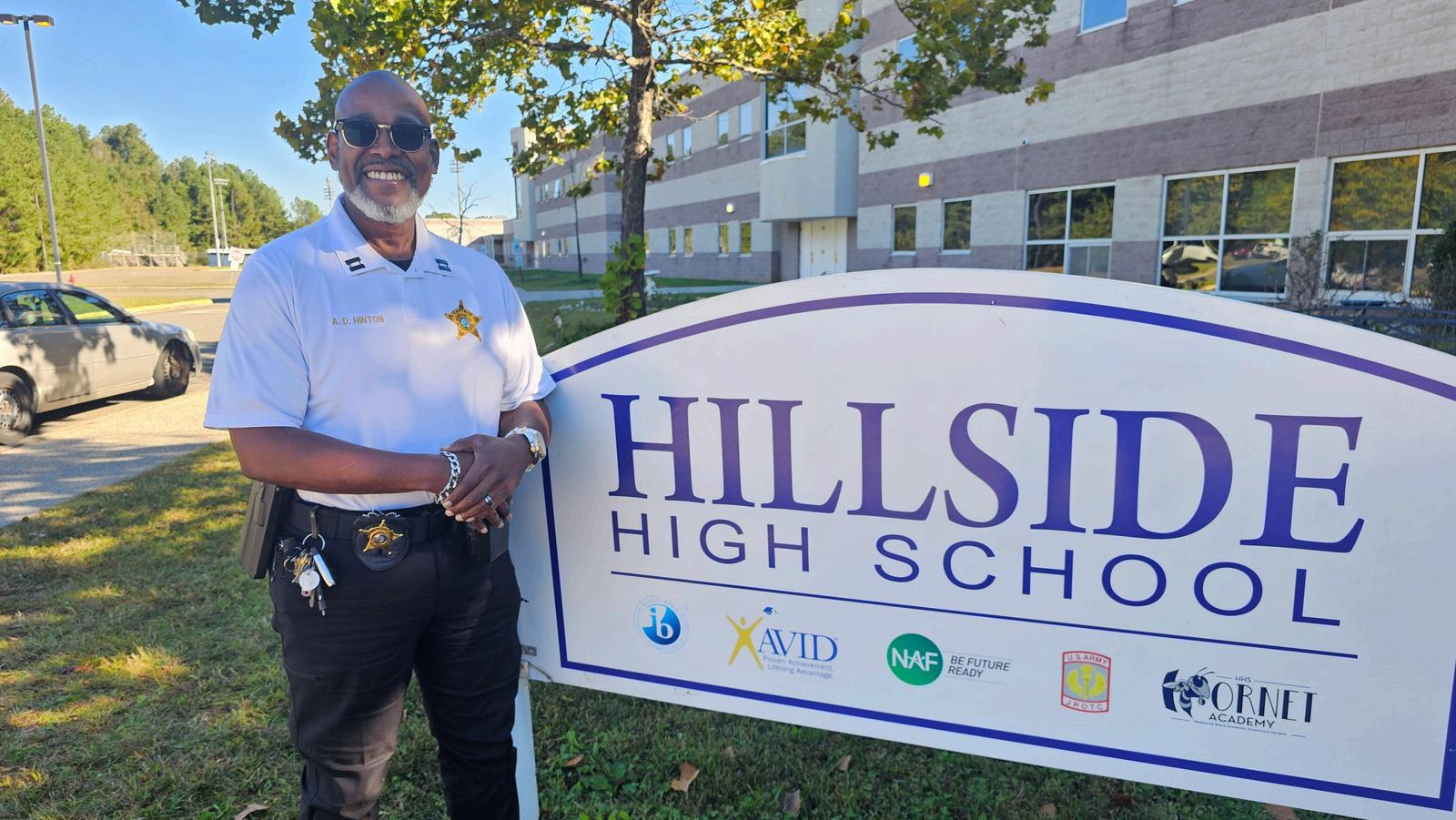
During long career with DCSO, Captain Andre Hinton has seen SRO job transform
When Durham County Sheriff’s Office Capt. Andre Hinton walks through the halls of our local Durham Public Schools locations; he’s not just a School Resource Officer (SRO), he’s a mentor, a counselor, a confidant, and, for many students, a lifeline
If you’d asked him if he would be all of those things to the youth of Durham County as a law enforcement officer 25 years ago, he may not have believed it. In fact, when he walked into the doors of Southern High for the first time as an SRO, he wasn’t sure he belonged there.
He had already spent years in law enforcement, but the idea of spending his days surrounded by students – many of whom may be skeptical of his
intentions – gave him pause.
However, it was a mentor who nudged him –toward the opportunity of a lifetime.
“I remember thinking ‘Kids all day? I don’t know about that,’” he recalled with a laugh. “But my mentor said – ‘Just try it. You might be the one person who changes a kid’s life.’”
That one try turned into 24 years and counting for Hinton, who started at Southern before heading to Neal Middle (where he took courses to be certified as an instructor for the ‘Gang Resistance Education and Training (G R E A T ) program),’ Hillside High, and now as SRO Commander for Durham County
In those early days, the assignment was straightforward. SROs were there to keep order. They were the uniform in the hallway, a watchful eye in the cafeteria.
“We were just seen as security,” Hinton says. “We weren’t expected to build relationships. We weren’t asked to mentor. We were there to keep things calm ”
But over time, and especially in recent years under current Sheriff Clarence F. Birkhead, the role shifted. And Hinton has enjoyed being part of that change.
“Captain Hinton and the other SROs representing us have become a ‘ resource ’ to our young people over time,” said Sheriff Birkhead “It takes time building relationships with the younger generation where today we are seen as mentors instead of someone in a police uniform. We are working hard to keep increasing the trust with our students.”
Capt. Hinton started talking to students – not just when something went wrong, but in the quiet moments between classes, during lunch, or while greeting them at the school entrance. He listened. He showed up after hours – to a basketball game or an event. And slowly, the badge became more than a symbol of authority – it became a bridge.
“You realize these kids needed someone to talk to Someone to trust And a lot of them didn’t have that at home or in their neighborhood,” he said
The SRO program, as we know it today, began in Durham County in 2003 as a collaboration with the City of Durham Police Department, DCSO, and Durham Public Schools (DPS). When the Police Department pulled out of that partnership around 2019, the Sheriff’s Office’s focus for SROs shifted to collaboration with the DPS School Board to make schools a safe and learning environment.
The transformation wasn’t just personal – it was institutional. When Birkhead first took office in December 2018, he made it clear that SROs were not just enforcers of rules. They were to be resources
“He told us, ‘I want you to be there for the students – not to punish them, but to support them,’” Hinton said
“That changed everything.”



All SROs must take specialized training, including:
State required Academy
Joint training with DPS security
DPS minority sensitivity
Attendance at state and national conferences
DCSO Conflict Resolution
State Bureau of Investigation Beta Threat Assessment
Many of the training courses must be taken on an annual basis to learn new guidelines, techniques, and trends.
Building that trust isn’t always easy. Some students come in with deep-seated mistrust of law enforcement, shaped by personal experiences or what they’ve seen in the media.
“They sometimes see the badge and think we ’ re the enemy, ” Hinton says “But we take the time to show them we ’ re not We’re people We care ”
And when that trust is earned, the results can be powerful
Hinton remembers the students who used to challenge him, who seemed unreachable. Years later, they approach him in grocery stores or community events, now adults with jobs, families, and gratitude.
They say, ‘You probably don’t remember me, but you talked to me when no one else would. You didn’t give up on me. ’ That’s what keeps me going.”
For Hinton, being an SRO is not just a job – it’s a calling He’s seen the role evolve from a reactive presence to a proactive force for good And he’s proud of the team he leads
“We’re a family,” he says. “We support each other, just like we support the kids.”

That support often extends beyond the school day. SROs attend games, coach teams, and even buy shoes for students in need. One officer, Hinton notes, spent over $6,000 out of his own pocket to make sure kids had what they needed.
“We’re not just in the schools We’re in the community We’re part of these kids’ lives ”
To parents, school administration and staff, and fellow Durham County employees, Hinton has a simple message:
“We care. We’re committed. And we ’ re here to help your children succeed.”
The motto of the SRO unit – Caring, Committed, Resourceful – isn’t just a slogan. It’s a promise. And for Captain Hinton, it’s a legacy.
Fall is here, and winter is just around the corner. As temperatures cool, there is something special about warming up with a favorite seasonal dish DCo employees share their go-to fall and winter recipes that are comforting and flavorful favorites perfect for chilly days From simmering stews and sweetspiced drinks to hearty meals that bring back cherished memories, these dishes are more than just food, they are a taste of home Grab a blanket, get cozy, and let these recipes inspire your seasonal menu

This recipe is near and dear to me It is one of the many recipes my mom has taught me to make My mom was always thinking of quick and easy meals to teach me, especially when I was in college, and this is one that I have carried with me I could tell it brought her joy when I would call her and told her I tried out something new, and seeing her happy always made me happy

Erica Maddox Department of Social Services
2 bags of mixed vegetables
2 cans of diced potatoes
1 diced or shredded whole rotisserie chicken
2 cans of cream of chicken or 1 large can of cream of chicken soup
1 cup of chicken broth
3 deep-dish pie crust
3 pie crust toppers
1 half stick of butter

1 In a large stock, pot melt 2 tablespoons of butter, add the 2 bags of mixed vegetables and diced potatoes, seasonings to taste, and combine well Let simmer for 5 minutes
2 Add diced chicken, cream of chicken soup, and chicken broth, and combine well Add more seasoning if needed
3 Separate ready-made deep-dish pie crusts and place the mixture in 3 of the pie crusts Do not fill to the edge of the pie crust Take the rolled pie crust toppers and place one on each of the readymade pie crust Remove the excess from the edge and press the pie topper to the deep-dish pie crust Cut 3 slits on top of the pie crust and cut slices of butter on top of each pie
4 Bake at 375 degrees for 45 min

Cindy Riley Volunteer Services Coordinator
I am a November baby, and fall is my favorite season My husband and I used to attend an Annual Neighborhood Halloween Party that was also a Chili Cook-Off While I was in charge of costumes, my husband was the master of chili; receiving “the golden ladle” award a few times over the years One year, he was out of town and would miss the event I felt the Riley Clan needed to be represented, so I started to look for a recipe I love all things pumpkin! My pumpkin chili didn’t win titles; however, I received an honorable mention, and a new category was born “most unique” chili!
1 3 lbs lean ground turkey
9 oz chicken maple sausage, sliced or crumbled
1 sweet onion, chopped
3 garlic cloves, minced
1 yellow + 1 orange bell pepper, diced
1 can (15.5 oz.) cannellini beans, drained
1 can (15 5 oz ) red kidney beans
1 can (29 oz ) pumpkin purée (or roasted pumpkin)
1 can (28 oz ) diced tomatoes
1 bottle (12 oz ) pumpkin beer
½ cup of chicken broth
2 tbsp chili powder, 1 tsp each oregano & cumin
2 tsp brown sugar, ½ tsp cayenne (optional)
4 tbsp olive oil, salt and pepper to taste
1 Sauté onion and garlic in 2 tbsp olive oil until soft Add peppers; cook for 5 mins Remove and set aside
2 In the same pot, heat the remaining oil and brown the turkey and sausage Season with salt and pepper Return veggies to pot Stir in beans, pumpkin, tomatoes, beer, broth, and spices Simmer on low for 1 5–2 hours, stirring occasionally
3 Top with cheddar, green onions, and sour cream
When I first moved away from home, my cooking skills were limited to spaghetti and Oodles of Noodles That got old fast! Stewed chicken was a staple in my childhood home, and it became the first real dish I learned to make, thanks to my mom ’ s patient instructions over the phone My dish wasn’t great starting out, but over time, it’s become one of my go-to meals Now, it’s a family favorite in my own home, and my family loves it!

Chicken Oil
½ cup of sugar
1/2 cup of ketchup
1 tbsp of hot sauce

1 In a saucepan, put enough oil to cover the bottom, spread out about a 1/2 cup of sugar in the oil, and allow the oil to heat up and the sugar to brown in the oil
2 Add your chicken and cover After browning the chicken on one side, turn it over and allow it to brown on the other side
3 Combine about a cup of water with 1/2 cup of ketchup and 1 tbsp of hot sauce Add chicken and allow it to boil down until the chicken begins to separate from bones
4 Cook for approximately 25-30 minutes
Celsi Simon Office of Emergency Services

1 cup dried hibiscus (Jamaica)
2 pineapples, chopped
3 apples
3 pears, chopped
10–12 guavas (guayabas), chopped
Tejocotes (Mexican hawthorn), as desired
1 small piece of fresh ginger
1 cinnamon stick, 2 allspice, 1 clove
Sugar to taste, water
This is a special recipe that we still make in my house every fall It’s a traditional fruit punch we enjoyed growing up; and the smell of simmering fruits and spices always brings back memories of the cooler months in the mountains When I first moved to the U S , it was difficult to find some of the ingredients Especially the Mexican hawthorn (tejocote) and guava but nowadays, you can find them in most Latin American stores across the country I hope you enjoy the recipe as much as we do!
I R E C T I O N S
1 Boil hibiscus in water twice; strain and reserve liquid
2 Boil tejocotes until soft, peel, and set aside
3 In a large pot, combine hibiscus liquid, tejocotes, chopped fruit, spices, and enough water to cover
4 Sweeten to taste Simmer 30–45 minutes until fruit is tender and flavors meld
5 Serve hot, with fruit in every cup
Originally made with pumpkin, this recipe quickly evolved in my kitchen As the only pumpkin lover in my family – and the designated baker – I swapped in sweet potatoes, and it’s been a hit ever since! Now, it’s the most requested dish at every fall and winter gathering Rich and indulgent, it’s absolutely worth the splurge To serve, simply cut into squares My family enjoys it as both a dessert and a clever stand-in for sweet potatoes when someone forgets to bring them!
1 box yellow cake mix
4 eggs (divided)
2 sticks of melted butter (divided)
2 baked sweet potatoes, mashed
8 oz cream cheese, softened
16 oz powdered sugar
1 tsp each: vanilla, cinnamon, nutmeg
1.Preheat oven to 350°F


Stephanie Robeson Register of Deeds
2.Crust: Mix cake mix, 1 egg, and 1 stick of melted butter Press into a greased 9x13 pan
3.Filling: Beat sweet potatoes and cream cheese until smooth Add 3 eggs, vanilla, remaining butter, powdered sugar, cinnamon, and nutmeg Mix well Pour over crust
4.Bake 40–50 mins, center should remain slightly gooey
5.Serve with whipped cream and a dusting of cinnamon I N G R E D I E N T S

Jessica Fludd Human Resources
1 lb spicy (or mild) Italian sausage
4–5 yellow potatoes, cubed
½ white onion, diced
1 tbsp minced garlic
6 cups chicken broth + 2 cups water
3 tsp salt, 1 tsp pepper
4 cups chopped kale
2 cups of heavy cream
Optional: Bacon bits, Parmesan
As a busy mom, winter nights can be hectic with school, work, and everything in between That’s why I love this soup it cooks while I handle the day’s tasks, and we all get to come home to a warm, comforting meal that brings us together around the table.
1.Brown sausage in a skillet; drain and transfer to slow cooker
2.Add potatoes, onion, garlic, broth, water, salt, and pepper
3.Cook on LOW 5–6 hrs or HIGH 3–4 hrs
4.Stir in kale and cream 30 mins before serving
5.Garnish with bacon or Parmesan if desired
I love to make this dish because it brings me the comfort of home I was born and raised in a strong Hispanic neighborhood and had the joy of trying many foods that were not part of my heritage The complexity of the spices and the love poured into each dish is what contributed to my love of cooking This dish brings comfort to everyone at the table
I N G R E D I E N T S
1–2 lbs chicken (breast or thigh), cubed
1 onion, diced
2–3 cans hominy, drained
3–4 poblano peppers
1–2 dried California chiles (seeds removed)
64 oz chicken broth (plus more if needed)
2–3 tbsp Mexican oregano
Garlic
Salt, and pepper
Olive oil

6.Serve hot with fresh garnishes and a squeeze of lime I N G R E D I E N T S
Garnishes: shredded cabbage, sliced radishes, diced onion, chopped cilantro, and lime wedges

Cassandra Rust Human Resources
I R E C T I O N S
1.Roast poblanos under a broiler until charred, peel, deseed, and dice
2.In a large pot, sauté chicken with salt, pepper, and oregano Add onion and garlic; cook until soft Deglaze with broth, then add hominy, more oregano, and diced poblanos
3.Finely chop dried chiles and stir in
4.Simmer for 1 hour
5.Adjust seasoning
Gordon Smith Emergency Medical Services

¼ - ⅓ cup of flour
4 eggs (divided)
Chopped celery
Onion
Bell pepper
Garlic cloves
Vegetable or beef broth
Andouille or smoked sausage
Chicken
Bay leaves
Salt and pepper
Being from New Orleans, I grew up with this stuff and this is version made in and around the metro area It runs through my veins There is a “creole” version that utilizes tomatoes, but we don’t mess with that stuff Gumbo is an amalgamation of many cultures from France, Spain, and West Africa and to me, represents the amazing diversity of people and cultures that makes New Orleans so special C'est si bon
If you try these recipes, be sure to let your colleague know you gave their favorite fall comfort meal a go!
7 Serve over long grain white rice with crusty bread, family, and friends I N G R E
1 First you start with a roux In a heavy bottomed pot or Dutch oven, add equal parts flour and oil (I use about 1/4 - 1/3 cup each), sloooooooowly sauté’ over very low heat until it takes the color of peanut butter or café au lait This should take about an hour, NEVER stop stirring or it will burn and be yucky Also, this stuff is called cajun napalm for a reason do not let it splash you! If it does, call 911 immediately! You might die th rd
2 To this add the “Holy Trinity” (chopped celery, onion, bell pepper), stir it around a bit and enjoy the incredibly savory steam bath you are about to get, then add chopped garlic for about 30 seconds followed by 2 quarts equal parts vegetable and beef broth (veal broth is preferred but difficult to find), then increase heat to medium low
3 For the chicken and sausage, if you have real andouille from Louisiana (smoked sausage is a far superior substitute than grocery andouille), slice into ½” chunks and brown in a skillet Do the same with the chicken (light and dark meat are appropriate) but don’t cook it through, you ’ re just browning at this point, then add to the gumbo
4 Throw in a bay leaf, salt and pepper to taste as well as cayenne Don’t go overboard with the heat, just a hint of spice is what you ’ re looking for, you can add hot sauce your individual portion later if you wish my personal recommendations are Louisiana Hot Sauce or Crystal hot sauce
5 Cover and let simmer until chicken is done through The longer the better! If you wish to try a seafood option, drop the chicken and sausage and add raw blue crab legs or shrimp towards the end
6 You can also add okra, but this will thicken it beyond belief if not prepared correctly
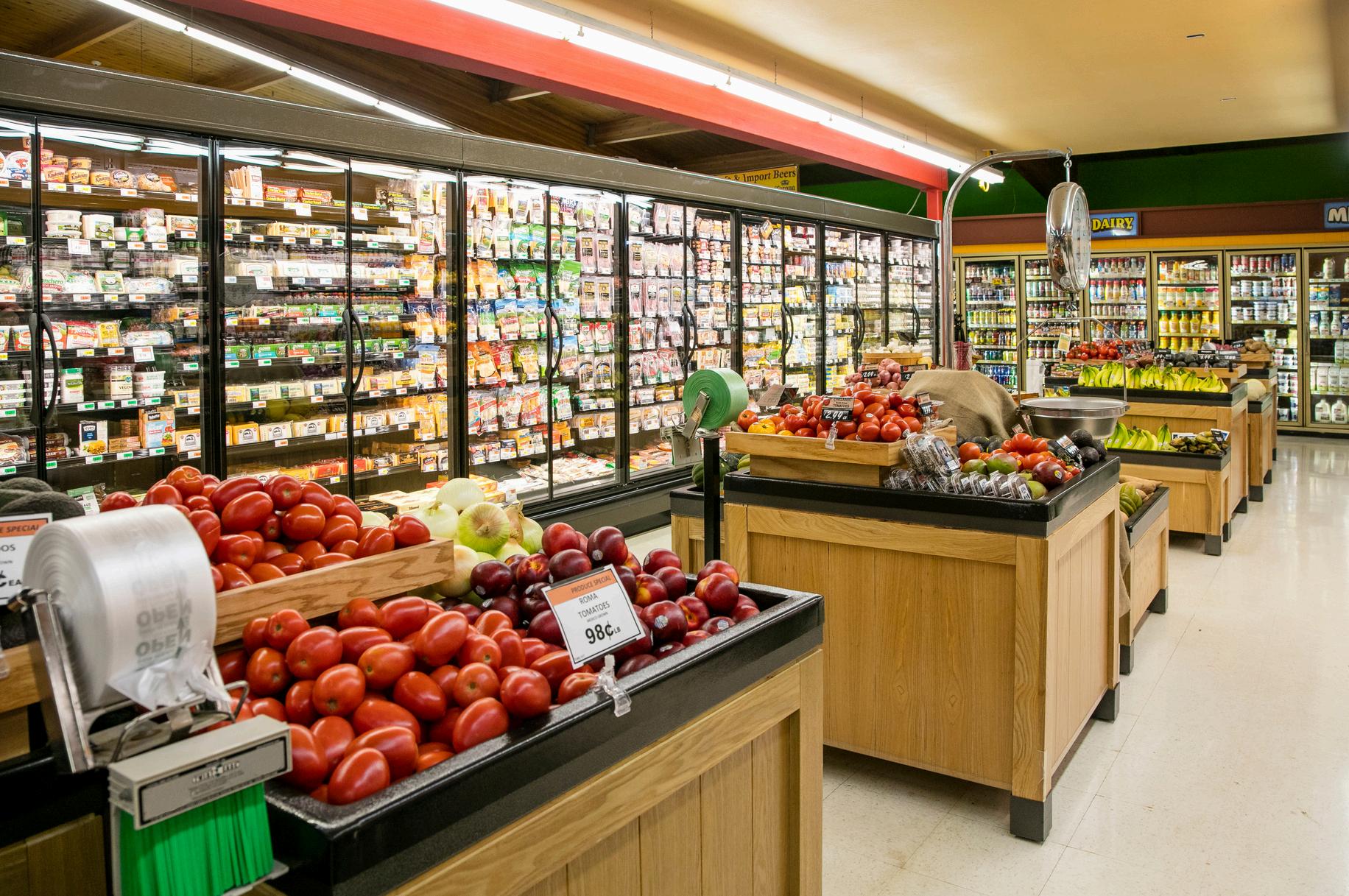
with DCo Public Health’s Nutrition Clinic
Nutritious food can be expensive, and it can be difficult to eat a balanced diet that includes fruits and vegetables when you ’ re on a tight budget. Eating well doesn’t have to mean spending a fortune With a little planning, you can nourish your body, enjoy great flavors, and keep your grocery bill in check Here’s how to make healthy choices without breaking the bank:
1. Shop with a plan (and a list!)
Impulse buys add up quickly. Before heading to the store, plan your meals for the week and make a shopping list based on what you truly need. Stick to that list your wallet will thank you. Take a quick inventory of pantry staples like flour, sugar, rice, oil, and spices to avoid buying duplicates you already have on hand.
2. Buy whole foods, not just convenience foods
Pre-cut fruit, shredded cheese, and single-serve snacks are convenient but cost more per serving Choosing whole fruits and vegetables, blocks of cheese, and larger containers saves money and reduces packaging waste.
3. Embrace store brands and sales
Generic or store-brand items often have the same quality as name brands at a fraction of the price Watch weekly flyers for discounts on staples and stock up on shelf-stable items when they’re on sale
4. Prioritize protein wisely
Meat is an important source of protein, but often it can be the priciest part of the meal. Try some of these more affordable protein options: Substitute beans or lentils in recipes that call for meat. Or use half the meat called for and half beans.
Buy canned tuna or salmon.
Plan a meal around eggs - omelet or egg burritos.
Buy frozen meat rather than fresh. Buy meat in bulk packages and divide it into the servings you would use and freeze
Buy peanut butter
5. Use your freezer like a savings account
Continued on page 15
Frozen vegetables and fruit are just as nutritious as fresh, last longer, and often cost less plus, no risk of spoilage before you use them. You can also freeze bread, cooked rice, or leftover soups to stretch your dollars

Budget-Friendly Shopping List (around $40–$50 for a week)
Brown rice or whole-grain pasta
Old-fashioned oats
Canned beans (black, kidney, or chickpeas)
Frozen mixed vegetables
Fresh apples or bananas (whichever is cheaper that week)
Eggs (1 dozen)
Peanut butter
Canned tuna or salmon
Low-fat yogurt (tub, not single serve)
Chicken breasts or thighs (family pack)
Bag of carrots
Onions and garlic (for flavor without extra cost)
Eating healthy on a budget comes down to planning, flexibility, and a willingness to shop smart. By choosing affordable staples and cooking simple meals at home, you can take care of both your health and your bank account.


Simple 3-Day Meal Plan Example (Repeat or mix and match for the week)
Day 1
Breakfast: Overnight oats with banana slices and peanut butter
Lunch: Brown rice bowl with beans, frozen veggies, and garlic-soy seasoning
Dinner: Baked chicken thighs with carrots and whole-grain pasta
Day 2
Breakfast: Scrambled eggs with toast and an apple
Lunch: Tuna salad wrap with carrots on the side Dinner: Lentil and vegetable soup with whole-grain bread
Day 3
Breakfast: Yogurt with oats and frozen berries
Lunch: Chickpea and veggie stir-fry over rice
Dinner: Garlic-roasted chicken with mixed vegetables



If you ’ ve noticed your grocery bill creeping higher lately, you ’ re not alone. A trip to the grocery store leaves many of us with sticker shock. According to the Consumer Price Index, grocery prices have jumped nearly 30 percent since before the COVID19 pandemic. For many households, that kind of increase can stretch their budget to its limits. But for Maria, there’s a powerful secret weapon for fighting rising prices – coupons Maria, an Income Maintenance Supervisor in the Department of Social Services’ Family Economic Independence Division, helps low-income households access the Food and Nutrition Services Program, a federal program that supports low-income households by supplementing their food budgets. Off the clock, she’s a couponing enthusiast who’s been clipping and strategizing for savings at the grocery store for nearly a decade. For Maria, couponing is much more than just a money-saver; it is a hobby that anyone can master.
The first step in couponing is knowing where to look for coupons There are two main types: manufacturer coupons, which come from the company that makes the product and can be used at most retailers, and store coupons, which are specific to one retailer “Several manufacturers, like Kellogg’s, have coupons on their websites,” Maria notes. “If there’s a particular product you love, check the manufacturer’s page before you shop.”
with Maria Fuller

For store coupons, there are several places to search:
Newspapers: A classic source for weekly deals. Local papers often include coupons, especially in the Sunday edition.
Mailers: Retailers frequently send out flyers packed with savings.
Receipts: Check before you toss that paper slip! Some stores print coupons right on the receipt for your next visit
In-store handouts: Look near entrances and checkouts for printed coupons
Loyalty programs: Many stores offer free memberships with exclusive discounts or member-only pricing.
Mobile apps: For the tech-savvy shopper, the savings are literally at your fingertips. Most stores have a mobile app that often features weekly ads that include a collection of coupons.
Once you ’ ve gathered your coupons, it’s time to strategize and organize. Extreme couponers often spend hours each week planning their trips It requires time, patience, and effort to plan out how to get the best deals “When I was extreme couponing, I’d set aside a few hours weekly to clip, sort, and plan my shopping list,” Maria says Her top tip for staying organized? A binder
“I use a binder with clear plastic sleeves and divide it into categories so I can easily find what I need,” she says. “When I’m in the store, I bring a smaller organizer with only the coupons I plan to use that day.” For those who can’t dedicate hours to couponing, Maria reassures us that you don’t need to be an extreme couponer to save money. Even small efforts can make a difference at checkout. Once an extreme couponer, Maria has recently decreased the time spent on couponing. “Anyone can coupon, no matter their schedule,” Maria insists “Start by using a store app and clipping digital coupons ” Digital coupons can be easy to manage Most store apps let you “clip” digital coupons into a digital wallet that can link directly to your loyalty account, making it easy to redeem them automatically by providing your phone number, email, or in-app barcode at checkout. “I currently use the Food Lion, Harris Teeter, Publix, and Dollar General apps, ” she says. “They make it easy to find and stack coupons for extra savings at checkout.”
One of the most common mistakes new couponers make is not understanding store coupon policies. “Every retailer has its own rules,” says Maria. “Some stores allow you to double or stack coupons; others don’t It’s always best to know before you shop ” Also, don’t forget to read the fine print on each coupon to understand how it works, check for expiration dates, and restrictions such as quantity limits and other limitations. There’s nothing worse than filling up your cart only to find your coupons aren’t valid.
Maria’s final piece of advice to someone who’s brand new to couponing is to start small and build your confidence. “I would start small with your first trip with couponing. Clip a few coupons from your store’s app and see how much you save, ” advises Maria It can take time to solidify an effective couponing strategy that works for you
Maria’s “aha!” moment came during a single shopping trip when she walked out of the store
with a cart full of items for under $20. “When I saw the total, I was hooked,” she recalls. “It motivated me to keep couponing so I could build a stockpile and save money. ”
The financial benefits of couponing can be endless. Couponing has helped Maria stretch her household budget. “Couponing has allowed me to get more for less,” she says. “That frees up money for bills, savings, or even occasional treats for my family.” So, next time you head to the grocery store, take a page from Maria’s playbook Grab your phone and clip a few digital coupons or grab that weekly circular by the entrance and thumb through it Keep track of your savings after each trip; you might be surprised at how those savings add up

Looking for more discounts and savings? Access the Employee Perks Program today!
The employee perks program can help support your personal and financial well-being through exclusive deals and limited-time offers on the products, services, and experiences you need and love Start saving today at https://dconc savings workingadvantage com!
To register:
1.Visit https://dconc.savings.workingadvantage.com
2.Click “Sign In/Register”
3.Create your account with your email and start saving today!
Click on “County Of Durham Specials” for exclusive local specials!
o
When your workday comes to an end, how do you spend your personal time? Across our organization, employees are pursuing passions that bring them joy, purpose, and connection in their spare time. These post-work activities enrich their lives and give a deeper meaning to the energy and creativity they bring to the world! In this feature, we highlight the passions, talents, and gifts that make our team members truly shine Our employees are more than their job titles Take a moment to get to know what fuels your colleague outside of their workspace!
What inspired you to start singing?
My mother used to sing folk songs and hymns with us as early as I can remember She had a lovely voice and was very pleasant to listen to. She made singing fun!
Do you remember the first song you ever sang or performed?
My first solo was also at church. I sang, “There’s Room at the Cross for You.” I was 16 years old and studying voice with our current choir director. This was my debut performance as a soloist.
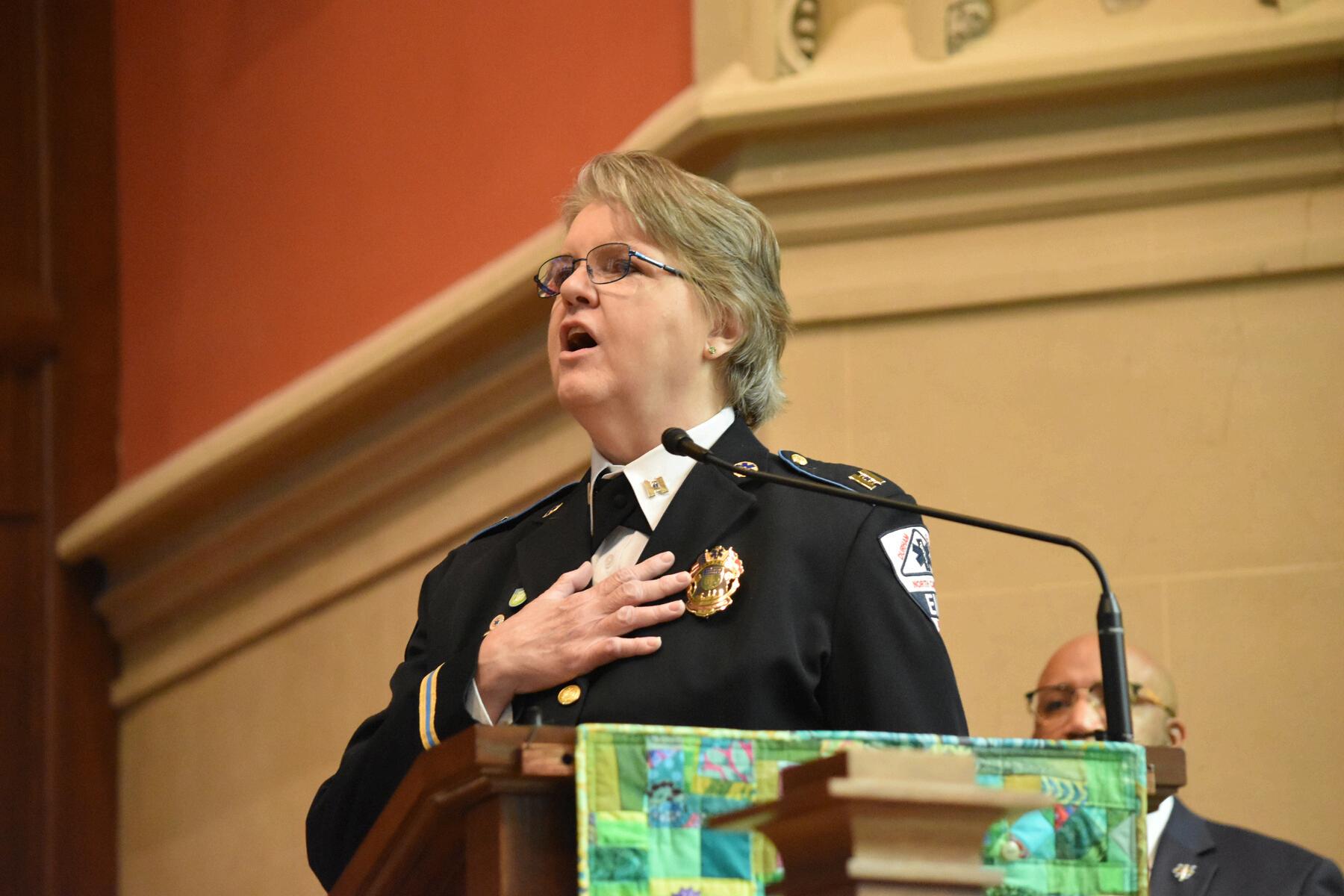
For Helen, singing is not just a passion, it is heart work she pours herself into with purpose and pride.
What is your favorite music genre and why?
My favorite music genre is choral music, especially sacred choral music I love the intricacies of the harmonies with multiple parts, especially when they go beyond the traditional soprano, alto, tenor, and bass
What inspires you to sing?
Music for me is praise. It brings me joy and is a way for me to express God’s love for us and my love for Him.
How do you prepare for a performance? I listen to the music a lot! I prefer to memorize the lyrics as much as possible. It sounds more genuine and from the heart when I do not need to constantly look at the words If it is a new song, I will sing it over and over for several days to be sure I am comfortable with expression, phrasing, vocal transitions, volume, etc I review it often in my head, and sometimes when I am trying to sleep at night.
I review it often in my head, and sometimes when I am trying to sleep at night
Do you experience stage fright?
Almost every time I sing in front of a new audience, I get nervous. It is never to the point that I cannot sing. However, I vividly remember I forgot the second verse of the National Anthem just before an event. This is a song I have known most of my life! Thankfully, the honor guard was there and, after ribbing me for a minute, we sang it together, and my memory returned! In any other circumstance, I remind myself that the show must go on! Keep smiling! Keep singing! Remember who I am singing for!
What does singing mean to you personally?
My ability to sing is a gift from God I use it to honor Him It also brings me joy and helps me relax I made a promise when I first started singing publicly that I would only sing songs that glorify God or that are patriotic in nature. I do not perform secular songs. I will sing secular songs because there is some really good music out there. But when I perform, it is for God, not for me.
How long have you been singing?
I have been singing since I was a child. I learned a lot of folk songs and children’s songs such, as “There’s a Hole in the Bottom of the Sea”, “There’s a Hole in the Bucket”, or “You are My Sunshine.” I remember how much I loved singing folk music with my mother when I was a child
What do you love most about singing?
It’s something I am good at It doesn’t cost me anything but time. I can carry it with me everywhere I go. And it works great with others who also love to sing!
What’s a special memory or short story tied to your passion?
There are so many memories! I had the honor of singing at my grandmother’s funeral in 1994, but I could not sing at my sister’s or cousin’s funerals.
A funny story. One day several years ago, one of
our previous EMS Chiefs and I were talking about hobbies, and my singing came up in the conversation. He said, “I didn’t know you could sing.” I told him it was okay. I don’t make a big deal out of it. We had the graduation ceremony of our first EMS Academy coming up in a couple of weeks, and he already had someone else scheduled to sing the National Anthem with the Color Guard. I told him that was fine It was not a problem And I really was completely okay with it About a week before the graduation, he emailed me, “Plans have changed The singer has canceled Can you sing instead?” I said, “Sure!” Now, I understand that he had still never heard me sing. He only had my word for it. But he was willing to take a chance. The day of the ceremony came. The Color Guard presented the colors, and it was my turn to sing! I was so nervous! I had never sung in front of this group before. They were not my church folks, and they had never heard me sing! I couldn’t even scan the audience like I usually do because I just knew I would mess up, so I found a spot on the floor and focused there until I finished and could walk back to my seat. The graduation program continued, and after it was over the Chief came to me, grabbed me by my shoulders, and kissed both cheeks saying “That was amazing!” I just looked at him and said, “I told you I could sing” and smiled After that, I started getting invitations from departments across the County asking me to sing the National Anthem for their events. He had put the word out!
What have you learned about yourself through your passion?
My mother always told me I could do anything I put my mind to. Music has given me the opportunity to do this in many ways. I am strong. I can be a leader. I can be an example to others without it going to my head. I am realistic about my limitations. I know what I am willing to do and what I am not.
If you could sing with anyone, who would it be and why?
I would love to sing with the Brooklyn Tabernacle Choir! They are amazing!

What began as a personal health journey five years ago quickly transformed into a full-blown passion for Oscar.
When did you start your health journey?
I started my transformation journey in 2020. My personal journey has strengthened my body, mind, and spirit. It has also helped me to reverse some chronic conditions and embrace a lifestyle focused on health and longevity. I have taken a holistic approach to healing, transformation, and creating a vibrant future for myself
Why is movement important to you?
Movement is essential to survival and well-being. From an evolutionary perspective, our ancestors had to walk, run, climb, and carry to hunt, escape danger, and build community Our bodies are developed to support this active lifestyle Our muscles, joints, hearts, and even our brains function best when we move. Movement isn’t just exercise; it is how we remind ourselves we are alive, adaptable, and capable.
favorite way to move?
ay to move is through DANCE! Dance ned my physical health, including my , and bones My balance, flexibility, ion have all improved Dance gives me ess my feelings in a way that words n’t capture. Dance builds community f belonging. When I move with the reduce my stress, boost my mood, ndorphins… feeling so good.
eel after you've been active, mentally?
alive, filled with energy and flow. In feel lighter, like I’ve shaken off a t even know I was carrying. I feel cted and fully present in the moment.
es movement play in your daily ntal clarity?
Movement plays a big role in my everyday life. It’s like a prayer or ritual for my body, mind and spirit. Movement clears my mind, awakens my body, and brings me into balance With every step, stretch, or dance, I return to clarity, energy, and a flow state
Can you think of a time when movement helped you overcome stress, fatigue, injury, etc.?
As a social person, it was difficult to be isolated during the pandemic I found myself struggling with anxiety, depression, and stress But in the middle of that darkness, I discovered the healing power of dance. Movement became my therapy, transforming my heavy emotions into freedom, energy, and joy. That’s when I turned to dancing. Each movement and each beat of the music gave me a way to release the weight inside of me. Little by little, dancing became my lifeline. It helped me breathe, feel joy again, and heal from the inside out. Dancing reminded me that even in hard times, we can find light, healing, and strength within ourselves.
Do you think humans are wired to move?
Our bodies and minds are designed to thrive through movement - movement is LIFE. It’s how we release stress, awaken energy, and come back to ourselves. Even on the days when we don’t feel like moving, once we do, something shifts Movement reminds us that we carry within us the power to heal, to grow, and to transform – one step, one breath, and one dance at a time

Deputy Director
His keen attention to detail and situational awareness suit him perfectly in his day-to-day work as an engineer and as a hunter in nature.
Is fishing and hunting a sport or more of a hobby for you?
I consider fishing and hunting to be hobbies.
When did you start fishing and hunting?
I remember hunting and fishing as early as 5 years old.
What interested you in fishing and hunting?
My uncle Jerome started taking me with him hunting when I was very young I started out primarily helping him feed, raise and hunt foxhounds for deer hunting which we still do together However, my passion went beyond his in that I also hunt from tree stands, bow hunt, plant
food plots for deer and other wildlife in addition to hunting deer with dogs with our hunting in rural Warren County NC. In terms of fishing, my father, his friends, and my Aunt Teresa would take me fishing with them during the warmer months. We fished everything from ponds, rivers and the local lakes Catching bass, crappie, bream, and catfish for fish fries for the neighborhood
What do you love most about your hobbies?
Obviously, the “Thrill of the Chase” and the comradery of hunting and fishing with friends and family. Growing up in rural Warren County we lived an outdoor lifestyle. Outside of work, education and earning a living, being outdoors hunting, fishing, cookouts, and fish fries are all you need to sustain you. A few bragging rights never hurt either.
What are some of the challenges you experience when fishing or hunting?
Now, with the pace of development and property transitioning from the older generations onto others, not knowing of or not favoring the traditions, finding places to hunt and fish is the biggest challenge for outdoorsmen This also makes getting the younger generation involved a challenge, as they need enjoyable outings to keep them coming back for more In the early years, folks were just so happy to see others in the community, and they welcomed you to hunt and fish on their property. Those days are long gone and mere memories.
What's one challenge you've had to overcome while fishing and hunting?
As the secretary of our Hunting Club, I was able to use my education and knowledge of Engineering and Geographic Information Systems to figure out which properties were critical to the areas we hunt. This information enabled us to secure lease agreements and/or some form of permission to hunt properties that were not owned by family and/or members of the club This awareness allows us to maintain areas sufficient to continue hunting despite the challenges We lease from timber companies, farmers, and from landowners who are simply looking for a means to use the money for
Continued on page 22
Continued from page 21
paying their annual property taxes. It is a “win-win” for many in the community. It makes me feel like a modern-day “Robin Hood ”
Have you taught others how to fish or hunt?
Yes, my nephew, daughter, cousins, grandson, and other youngsters in our Hunting Club The younger generation loves and embraces the outdoors; once you get them away from the gaming stations, etc. I have to make sure that my outright obsession is channeled to their level of experience and passion. In other words, I have to understand what they want out of it and go from there.
What’s a special memory or short story tied to your passion?
You always remember harvesting your first and biggest deer or the fishing trips where you or a friend or family member caught a big fish, or you all caught a bunch of fish for a fish fry I’ll never forget my grandson’s recent catch, a big crappie at Falls Lake He was terrified of the wriggling fish! While helping him hold it for a picture, things got more exciting the moment the fish pulled one of my favorite rods and reels in the water! I played the memory over in my head all the way to the Bass Pro Shops to replace my rod.
Another special memory was when my uncle, the one who interested me in hunting, harvested a big buck large enough to make the NC Sportsman Magazine and win the Best by Gun Typical Category at the 2020 Dixie Deer Classic. Being out there with him that day on the hunt was amazing.
What have you learned about yourself through your passion?
Determination, perseverance, and true grit Often, I tell my staff about my experiences raising hunting dogs and remind them that you can’t teach desire Just like hunting dogs, humans are similar in that some are simply born with it, while others are not. You learn to look for and cherish those qualities when you encounter them. Either you have it in your or you don’t. Life is just that simple.
What would you feel if your passion was no longer accessible?
Line up the Funeral Home.
If you could fish or hunt with anyone, who would it be and why?
Of course, my uncle Jerome He and I have fun talking about life, family and what is going on in the world even if we don’t get a shot that day Those are the real memories I also cherish crappie fishing with my daughter and my cousin Vincent They are “Go Getters!" If the fish are biting, we are leaving with buckets.
What part of your passion has brought you a sense of pride and fulfillment?
My daughter is a surgeon in residency at Emory in Atlanta, so we don’t get as much time together as I would like to have, but when we do... lookout! I take pride in knowing that I raised her well and helped shape her enjoyment of the outdoor lifestyle.
By the way, I have a wall full of big bucks and am sort of a legend in the deer woods of Warren County

The DCo Brand Standards keeps Durham County’s look sharp, our voice clear, and our vibe unmistakably ours Learn more and grab your copy of this publication on the DCo PIO webpage.







Durham is experiencing what some call a rebirth. To others, those whose families have a lineage that traces back to the days of Black Wall Street and booming textile and tobacco industries, the city’s transformation is both familiar and deeply personal.
Native Durhamites, many born at Watts, Lincoln, Durham County General, or Duke hospitals, carry a unique pride. They remember North Carolina Mutual’s legacy and the early days of Research Triangle Park. They know the best local spots, celebrate rich cultural traditions, and serve as the Bull City’s unofficial historians.
These are their stories
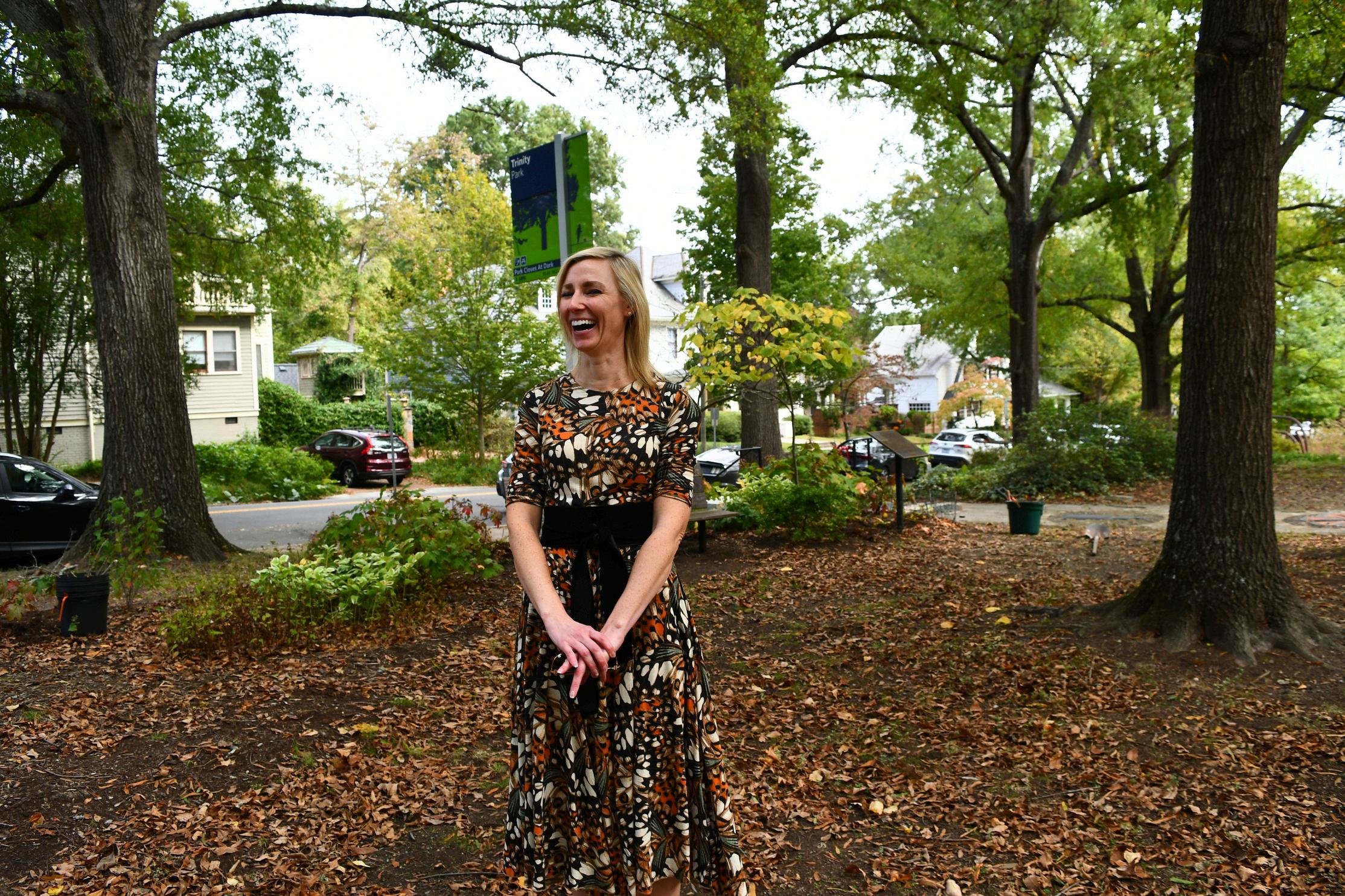
Few can likely say they are part of the fifth generation of residents who live in Durham, but Elizabeth Schroeder can. Her great-grandparents
established the legacy that continues to this day Schroeder's great-grandparents are founding members of the historic Watts Street Baptist Church in the Trinity Park neighborhood, where she was raised
“Trinity Park and Duke University's east campus are where my brothers and other children in the neighborhood would ride our bikes. We even had special names for specific trees – we’d loved climbing the magnolia trees.” She spent time at places like McDonald’s Drugstore on Ninth Street, Wellspring Grocery, the Museum of Life + Science, and Duke basketball games.
“Being part of the community was so important to my family,” she said. Her uncle currently lives in the same home where she grew up
This same community is where she serves today as chief emergency manager in the Office of Emergency Services for Durham County. After working as a clinical nurse at University of North Carolina Hospitals, Schroeder pivoted her career to combine her training and passion for outreach, leading support in preparing her community to respond to challenges in critical situations.
“Nursing is holistic, and there are cascading impacts in having to navigate conversations and politics, which translates over to emergency management ”
Schroeder sees Durham’s variety. “What is unique because of the breadth and depth of its care, research, faith-based organizations, literacy development, arts, and abundance of opportunities – that range from children’s programs, YMCA activities and the rich cultural resources and programs From an emergency management perspective, I see where the community may be vulnerable; however, I am impressed by the collaborations we have within the public safety community in the city and county."
She noted, “Over the past four decades, there have been a lot of changes in Durham and in my current role and having an understanding of the context of where Durham has been, I have full appreciation of the strategic direction where we are going. I feel extremely fortunate to be part of it all.”

She describes her role with the county, which she has held for the past three and a half years, as “the perfect fit ”

“ C o m m u n i t y P r i d e , C o l l e c t i v e A p p r e c i a t i o nT h e T a p e s t r y o f D u r h a m ”
When new jobs brought James Tabron’s parents to Durham three decades ago, he didn’t realize then that he’d still call Durham
home years later.
“Durham has unique pockets of people and thriving communities My dad worked for the local government in housing, and my mom was an educator who taught at Lowe’s Grove Middle, Jordan High School, and in the central office for Durham Public Schools They were both enmeshed in the community,” stated Tabron.
He described the city through his eyes. “Durham has unique pockets – different neighborhoods, and each is unique and cool in their own way. People are proud of the neighborhoods they grew up in. It’s an interesting vibe. Even in that uniqueness of space, they were also proud to say they were from Durham, and a collective appreciation and connections, and the totality of what it represents ”
Taborn, who is the Assistant Register of Deeds for Durham County, has a strong affinity for his beloved Bull City. He went to school with classmates from throughout the city, whom he met not only in school but also through his participation in Durham Parks and Recreation activities. “I learned how to play sports in Whippoorwill Park and enjoyed events at the Museum of Life + Science. The activities and events Durham offered would always bring people together.”
The original Wheels skating rink, South Square Mall, Yorktowne Movie Theater, Parkwood Library, Darryl’s restaurant, P D Quicks, Hayti Center, Winn Dixie, and George’s Garage were places that he recalled fondly from Durham’s past
”These establishments were the hottest local haunts. Today’s Durham remains a beautiful place – from its natural beauty and natives who are still here to doing nearly anything you can enjoy in other parts of the county.”
Tabron noted Durham’s desirability including its proximity to other large metropolitan cities and access to Raleigh-Durham International Airport. The arts. The southern foodie capital. “Opportunities have expanded as the community has grown ”
“You can get a world-class education, obtain life-saving medical care, meet people from around the world and experience and learn history,” he continued. “The Bull City has had a noteworthy impact on the region and the country. Durham is me. ”


Reminiscing on his youth, JT stands at the rusted fence on the field where he played numerous baseball games during his childhood at Whippoorwill Park

TThe late James Nunn was born in 1882 He spent his life living, working, and actively engaging in the Durham County community throughout the 93 years of his life
His oral history is told in “The Oral History of James Nunn,” published by the Chapel Hill Historical Society in 1977. Still, his granddaughter, lifelong Durham County resident Angela Nunn, was a living witness to several of them during her youth. In the 1920s, the elder Nunn invested in plans for future generations: he purchased 23 acres of land and built a family home and deeded each of his seven children a piece of property
“My grandfather had a store in southwest Durham near Chapel Hill off Farrington Road,” she recalled “I attended segregated schools and was bused to both Githens Middle School and Jordan High School as we lived in a rural part of the County.” The elder Nunn, born during slavery, is described as “ a gentle man who had morals and ethics and was a pillar in the community. I’ve learned to have an awe for my grandfather. As I got olde own my heritage. My grandparen in the community.”
A deacon in Barbee Chapel Bapt church he helped build, Nunn is a the same congregation today Sh work as Durham County Youth H as living out the work planted by grandparents
“My grandfather participated in a bring Farrington Road into the C helped design and build the first school.
In my job with the County, I work in our community to improve the conditions and keep our children engaged in the community.”
Durham is her home, one where her family’s roots have grown long and are forever intertwined with and holding up Durham’s rich foundation.

Angela’s grandparents, were pillars of their church and champions of their community whose love and service shaped her life. Their lives were daily lessons in grace, leaving a legacy she carries forward with gratitude and purpose


Durham has and is still developing. Over the past six decades, Grace Elaine Laws has seen much of it up close and firsthand. In the 1960s, she was born at historic
Lincoln Hospital, now Lincoln Community Health, once Durham’s only hospital that cared for Black residents. Laws was raised in the West End in front of Lyon Park.
“I grew up in and through segregation Though my mother worked for Duke University, we couldn’t be treated at the university’s hospital ” Proudly raised by her parents with her grandparents and great grandparents living nearby, Laws’ memory of Durham’s yesteryear ignites nostalgia.
“My grandmother worked at Leggett & Myers, and I distinctly remember the smell of the resin from the tobacco barrels. Places including Regal Theater, Amos and Andy Hot Dog Stand, Garrett Drugstore, operated by Durham’s first black pharmacist and pharmacy owner, the five legacy funeral homes, Royal Ice Cream Parlor, the old Jack Tar Hotel, Addison’s Playworld, Grants Department Store, Ward Furniture Store, Charles Durham, and historic churches, including St Joseph AME Church, made up our city ”
Combined with her parents' love of North Carolina Central University football, Laws never missed the annual Turkey Classic, now the Eagle-Aggie Classic, that pitted the university against its rival, North Carolina Agricultural and Technical State University.
“Parades often marched down Fayetteville Street, the county fair was in full swing, and the Bimbé Festival was a cultural moment.”
Laws remains grounded in Durham. Prior to joining Durham County where she works as the senior administrative assistant for Durham County’s Department of Engineering and Erosion, she graduated from and worked for North Carolina Central University, and dedicated years to Durham Public Schools Laws and her husband, children, and grandchildren are helping to write the city’s newest chapter that begins with acknowledgements of honor and recognition for just how far the Bull City has come.
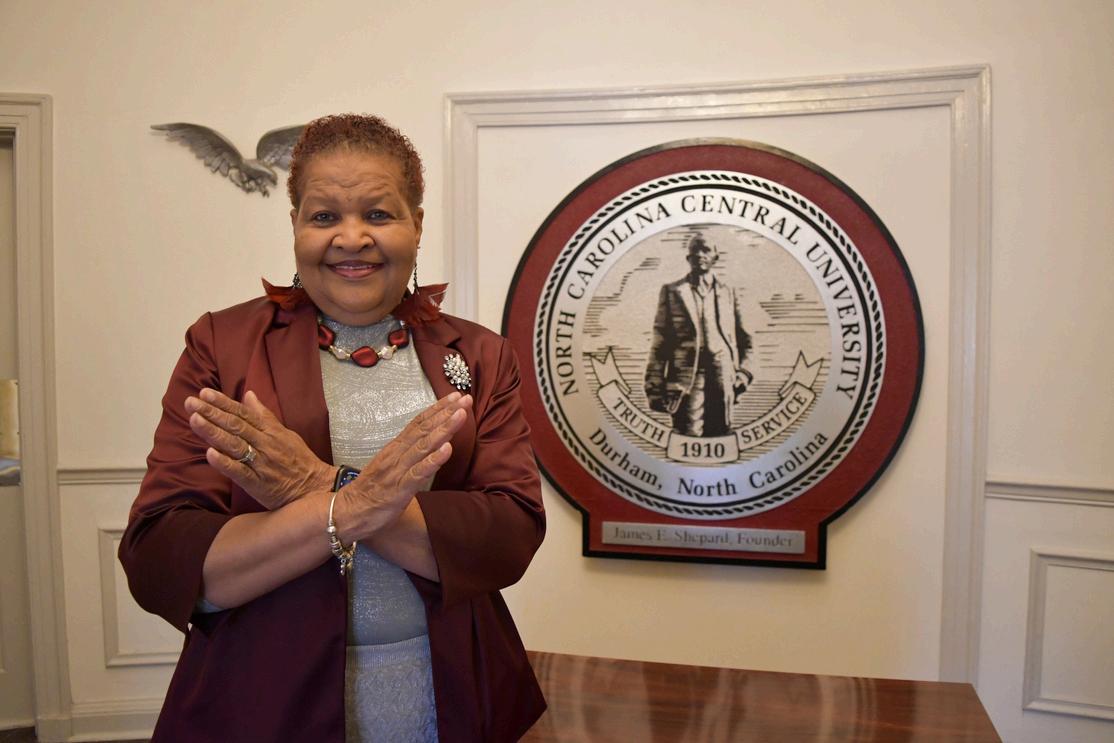

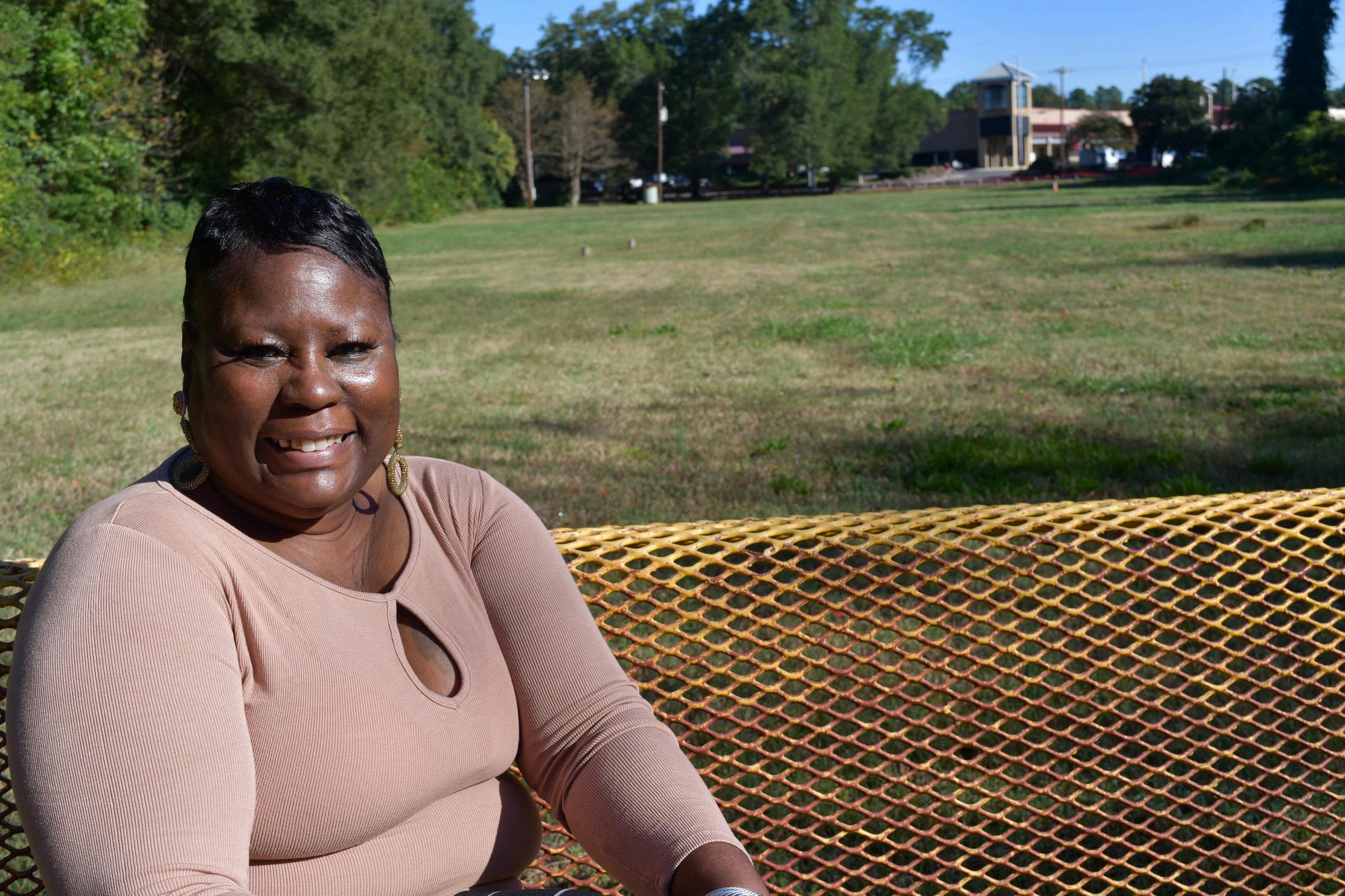

My childhood began in the Walltown neighborhood near Northgate Mall,” said Shawantha Perry, a fourth-generation Durham native who serves as
senior accounting clerk for Durham County “My grandparents opened the first general store on Berkeley Street From the plentiful snacks and sweet potato cake to seeing the bread and milk get delivered to the store, it was special growing up there. Everyone took care of each other, there were no strangers, and the community was one big family,” she fondly remembered.
She remembered when community festivals, like Bimbé, began, Skate Inn on Chapel Hill Boulevard was a hot spot, and eateries, including Chicken Hut and now shuttered
Doug’s Seafood, which Perry stated had ‘the best fried fish’ alongside Coleman’s Seafood, which ‘made the tastiest peach cobbler,’ were legendary staples.
There was so much to do back then. Block parties reunited families with their old neighborhoods and, to this day, still bring them back home,” said Perry
Perry has worked in the Durham County Finance for 29 years Her contagious pride for the city that raised her helps as she shares her knowledge with both new and longtime years. residents. From growing up near Forestview Heights to serving in the U.S. Army and being stationed in Hawaii, she will always return home to Durham.

Durham is rich in distinct arts, cultural experiences and offerings that help shape the city’s landscape that Eileena Boyce knows well.
“I am a first-generation Durham native – born and raised. I tell everyone that I’m from Durham,” proclaimed Boyce. Reared in North Durham, she passionately speaks about being thankful for being raised in the Durham community
“I remember the festivals, like the Eno Fest and Marry Durham, and meeting new people, gathering and enjoying the community, and having fun Durham has always been community-oriented.”

Boyce, a former member of Walltown Children’s Theatre, graduated from Durham School of the Arts (DSA) and has always appreciated the Durham’s arts community.
As part of her continued connection to sharing art with the community, Boyce went back to DSA in June to choreograph a small piece for their chorus students. “I enjoyed sharing the experience with young people ”
Boyce has deep admiration for Durham’s art spaces She described Durham as lively, accepting, safe, and community-driven
“Durham is home,” she said. “Keeping the events and activities that bring the community together can keep everyone together, so we are not forgetting people, history, and losing, but holding on to the things that make Durham, Durham. I have hope that Durham will continue to grow in the way that it needs to for the better.”

community I grew up in In this position, helping people get the resources they need, perhaps a little quicker, and to those who may not be able to access them, including voter photo IDs.”
She also serves her community in her role as elections outreach specialist with the Durham County Board of Elections “I love my job particularly because I am reaching out to a
What keeps her in Durham is the community…”so much of my life happened here. It feels good to be here.”

Learning and books are part of Felicia Brown’s DNA She boasts about her family’s special legacy at North Carolina Central University (NCCU), which spans three generations of
graduates. She fondly recalls how her mother, a teacher at Burton Elementary and later Glen Elementary, took her and her brother to the Durham Main Library every Saturday when growing up. She has returned to the library that sparked her love of reading as Bragtown Library’s Branch Manager. The job provides her with the joy of working with children and their families
Brown’s father’s family is from the Hayti community, where her great-grandfather owned and operated a store on Fayetteville Street
“Homecoming at NCCU is like a family reunion.” She spent part of her childhood in Bragtown before moving to East Durham.
After earning a sociology degree from NCCU, she worked as a probation officer before blending her undergraduate focus and professional work experience to earn a master’s degree in history at NCCU. Her thesis focused on a social historical analysis of North Carolina’s penal system and the mass incarceration of African American males after slavery until the 1990s Then, Brown discovered the graduate program in Library and Information Science at NCCU
She was accepted and received a scholarship from the Institute of Museum and Library Services, which funded the entirety of her Master of Library and Information Science degree. She taught in the Durham Public Schools and served as the librarian at Mangum Elementary School in the Bahama community.
Brown returned to Durham following a stint as

Felicia (bottom left) is pictured with her brother and both grandmothers, maternal and paternal, at JJ Henderson Tower on Duke Street. Just behind them, the iconic North Carolina Mutual Building rises into the Durham skyline.
a school librarian in the Charlotte-Mecklenburg School System and with a branch of the CharlotteMecklenburg Library system.
“I worked as the children’s manager at Durham Main Library and got promoted to branch manager at Bragtown. My manager said I knew the community well and I was the perfect person to put Bragtown back on the map. ”
The historic branch started as part of the Stanford L. Warren Library on Fayetteville Street and served residents in the African American community.
In the past year, Brown started a small community garden, increased children's programming significantly and created other community resources
“You touch so many people by working in the library. I grew up there [the library] and instilled a love of reading and exposure in my kids. You can go so many places in a book."

D“ C h a n g e , E v o l u t i o n , a n d G r o w t h ”
eborah Hart has seen Durham in many stages of its growth. She saw the school system desegregated in the early 1970s, after starting at Hillside High
School and then being bused and graduating from Durham High School, now home to Durham School of the Arts. Urban renewal brought many changes as she grew up in the Hayti section of the city, and her family was moved to Few Gardens. Her sister was the first Black cashier on the main floor at S.H. Kress Department store.
As one of seven siblings, Hart has spent all but 10 years of her life in the Bull City
“Coming up, we’d go to the River Theatre on Pettigrew Street, next to the Biltmore Hotel, where many famous African Americans stayed. After school on Tuesdays, we had ‘sock offs’ at he W.D. Hill Recreation Center and would
dance in our socks ”
Hart works as senior elections administrator in the Voter Services Division for the Durham Board of Elections. “
I do voter registration, and I know where precincts are located.” She started as a seasonal poll worker and began working in a temporary role 10 years ago before being hired permanently. She is nationally certified as an election administrator. “In this job, I get the satisfaction of keeping people informed and educating them about the election and voting process and encouraging them to vote ”
Today, there are numerous restaurants, the Durham Performing Arts Center and Durham Bulls Athletic Park that Hart believes have been positive changes to the city. “Durham is special to me because it’s familiar,” said Hart.

onica Wallace’s memories of Durham are recollections that nourish Durham’s soul: they span from her grandmother working at Parkers Restaurant on Main and Fayetteville streets to purchasing
plates served at The Green Candle Restaurant in Phoenix Square – both were iconic eateries from the 1960s to the 1990s.
A native of East Durham, Wallace knew the corner stores and locations that evoke memories. “Durham is where I grew up, it’s what I love.”
Her fondness for Durham continued over the years to include ‘ new ’ Durham, such as the defunct Art of Cool Festival and Missy Lane’s Assembly Hall
Wallace serves as the Clerk to the Durham County Commissioners; she maintains the records for the County, facilitates the County Commissioners’ meetings and oversees 43 County voluntary boards and commissions.
“Because of my upbringing, I can empathize with residents and know how to respond to various
situations. Because I w I can honestly bring re to the Commissioners attorney, and others a conversations as I put

What brings her joy in being from and working for Durham County? “Seeing the positive changes and even in our hard times, we will overcome them because we have our differences but work together for the main purpose I enjoy seeing people thrive ”
She recently recalls a ‘full circle moment’ when the neighborhood library she frequented during her childhood, the Stanford L. Warren Library on Fayetteville Street, celebrated its reopening.

“I went there nearly every afternoon after school. It was like a second home. The librarian was very welcoming and personable,” she said. They knew me, and if I didn’t show up in two days, they’d ask about me. There were always activities, arts and crafts, and it was an extra outlet.”
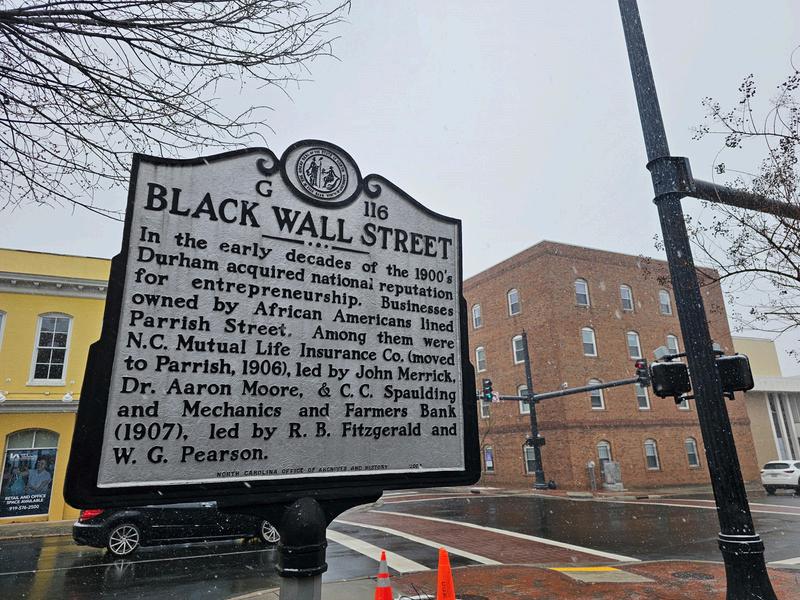















Each day, approximately 2,000 Durham County employees hit the road to work. Most of them are behind the wheel of their cars. But as traffic in the Triangle region grows and commute times increase, prices of automobiles skyrocket, gas prices fluctuate, and environmental concerns rise, more in-office workers are asking a simple question – Is there a better way to get to work?
Durham by the Numbers: How We Commute Statistics show just how many residents commute to work and how many drive to work in our community. Either within Durham County or from neighboring counties.
According to the U.S. Census Bureau’s 2023 American Community Survey:
76% of Durham County workers drive alone to work
9% carpool
4% use public transportation
2% walk or bike
The average commute time is about 24.5 minutes
6% of workers now work from home
For sure, the majority of us rely on personal vehicles to get to work
Shifting the American mindset that equates a car with so much of “normal,” everyday life is the biggest obstacle But the small minority of bikers, walkers, bussers, and train riders is growing and a shift toward more sustainable and community-friendly commuting options is more likely today than in the past.
Here at Durham County Government, there is a growing number of employees who use alternative transportation methods. Maybe not every day, as rain, extreme weather, and in-person workdays make driving in the car necessary. For DCo employees like Samantha Smith, Keith Lane, Rebecca Alberti, Lindsey Bickers Bock, and Curtis Scarpignato, options like biking, walking, carpooling, and public transit offer a mix of practical benefits and real-world challenges

They say unanimously that the shift has been both empowering and surprisingly joyful.
One of the most immediate advantages of alternative commuting is cost savings. Ditching the car can mean big reductions in fuel, parking, maintenance, and insurance costs.
“There were weeks I didn’t pay for gas at all,” said Lane, the Director of Budget and Management Services, who biked to work for years before moving too far away “And I never had to deal with traffic or parking I parked my ‘ car ’ in my office ”
Scarpignato, a Transportation Planner, walks to work and says the savings are “severely underrated.” He encourages others to calculate how much they could save on gas and vehicle wear and tear.
Alberti, an IM Caseworker II, shares a car with her husband and chose her job in part because it was close enough to bike. “It’s only about a mile from home, and I can actually park closer to the employee entrance than if I drove and parked in the garage, ” she says.
There’s also a health boost. Walking or biking to work builds physical activity into your day, which can improve cardiovascular health, reduce stress, and even enhance focus and productivity
Smith, a Management Analyst, says the best part of her commute is rediscovering how much she loves biking.
As a former New York City resident, commuting without a car was a necessity For her first 18 months in Durham, she walked. But after moving further out, she started biking.
“Thankfully, I can commute mostly on bike trails,” Smith said. “I get to feel like a kid again for my 20-minute bike ride before I get to the office and do all my grown-up work.”
Bickers Bock, Health Education Director, reduced her commute from 39 miles to less than 2 when she came to the County. “I was eager to get out of my car and explore the possibility of alternative transportation,” she said
The thing that finally got her to do it consistently was when the construction of the Main Street parking decks saw her commute go away from her office in the Human Services Building.
“At that point, I would have had to go away from home to utilize the shuttle from the off-site parking lot, and I decided to go all-in!” she said.
Was it the right move?
“It’s nice to leave work and be able to zip home on my bike,” Bickers Bock said. “The fresh air and physical movement create a nice break at the end of a busy workday before I shift to responsibilities at home ”
Then there’s the environmental impact
Continued on page 44

While not all commuters identify as environmentalists, many appreciate the ripple effect of their choices.
“I think an environmentalist is simply someone who prioritizes decisions that benefit the environment,” Scarpignato says. “And walking instead of driving is one of those decisions.”
Of course, alternative commuting isn’t without its hurdles. Weather and infrastructure are common concerns
“Rain stops me as a bike rider,” Lane said “Sometimes it’s just too cold But heat? Not so much ”
Other than occasional tumbles into bushes along the way, Smith joked, weather is a real concern.
“Apart from getting soaked, I find that it doesn’t feel very safe to bike in the rain because of many of the cars on the road and lack of bike lanes on certain routes,” she said, adding that “the pedestrian trails always feel super safe for me to ride through, so I’m thankful for those!”
Bickers Bock notes that construction and car-centric design can make biking feel unsafe “People don’t want to slow down for bikes Detours can put me on bigger roads, and debris or signage in the road can make it difficult to safely commute ”
Scarpignato, who walks daily, says his biggest challenge is crossing Roxboro Street. “It’s one of the more dangerous and unpleasant roads to walk across in Durham.”
Professional appearance is another challenge. “It’s not always easy figuring out the weather and looking professional once I get in,” Bickers Bock says. “Thankfully, I can use the locker room at the Human Services Building to clean up and change.”
Lane agreed. “For me, there was only so much I could carry in a backpack,” he said “A change of clothes sort of becomes the norm when biking for 15 minutes or so ”

Despite the challenges, the rewards are clear – from saving money to improving health and even enjoying the ride.
“Not paying for gas for weeks at a time is great,” Lane said “Not ever dealing with heavy traffic At the bottom of the list, but not unappreciated, was the extra physical activity I also like moving through downtown on Main St quicker than cars do!”
“You get to combine your commute with exercise – it feeds two birds with one scone!” Smith said.
Alberti loves the sensory experience: “I love feeling the breeze and the sunshine, noticing the trees and flowers more since I’m moving at a slower pace. ”
Scarpignato finds walking helps him feel more connected to the community. “It’s just a different way to experience the area and feels less isolating than driving.”
There are also unexpected moments of humor and connection. Scarpignato once got splashed by a car hitting a pothole and successfully reported it to the North Carolina Department of Transportation.
“I encourage people to report potholes online if they see them,” he says.
Bickers Bock recalls being known as “the lady who rides the purple bike” and once bungeeing a dish of Jello salad to her bike rack for a potluck.
Alberti also loves no parking garages!
“It’s super easy I only live about 1 mile away, and it takes about the same amount of time whether I bike or drive And I can get to park closer to the employee entrance than the parking garage and avoid walking up/down four flights of stairs!”
Durham County and the City recently approved the Durham County Transit Plan. The plan guides how we (government) invest, spend, expand, and prioritize our public transit system using sales tax and fee revenues.
Durham County is working to support employees who want to explore new commuting options From subsidized GoDurham transit passes (although all GoDurham routes are fare free at the moment) to bikefriendly facilities and flexible work schedules, the county is laying the groundwork for a more mobile, sustainable workforce

Bickers Bock encourages others to take advantage of these resources. “Covered bike racks, showers, and Choose to Move time all help make it easier,” she says.
Alberti recommends the Durham Bike Co-op for affordable bikes and repairs.
“They even donate bikes to community partners like World Relief, giving people freedom and independence,” she said.
As Durham continues to grow, how we get to work will shape not just our daily lives, but the health of our community and environment For employees, the choice to commute differently isn’t just personal – it’s part of a broader vision for a smarter, healthier, and more connected community.
As Bickers Bock puts it: “Some is better than none. More is better than less. There are lots of opportunities to drive. When can you find a time to pull on your sneakers and walk or bike somewhere?”
Lane said all it takes is that first pedal or step. “It just takes a little while to get in the rhythm of doing things differently,” he said.
Added Smith: “Do it! It’s fun to see other local government folks or elected officials biking around!”
And Scarpignato offers a final reminder: “You aren’t stuck in traffic – you are traffic ”
So next time you grab your car keys, ask yourself: Can I take another path to get there?
Need an incentive to ride the bus to work? Currently, GoDurham is fare-free for all ages!


Severe weather can and will happen at any time and place across the globe When you think of extreme weather events that hit close to home, how did you respond? How did you prepare?
Depending on where you live and the time of year, severe weather may be predictable and easy to see ahead. North Carolinians generally know what to expect each season in our region There is substantial heat and humidity in the summer, and mostly mild days in the spring
Each year, hurricane season in North Carolina begins in June and ends in November Not even one year after winds and flooding from Hurricane Helene caused major destruction of infrastructure in North Carolina’s Appalachia, Tropical Storm Chantal brought powerful storms right to our Piedmont community.
No one imagined a hurricane bringing significant rainfall and the power to take lives would devastate the western part of our state. And certainly, no one in Durham could have anticipated a weakened tropical depression at the end of its course, causing heavy rains and a historic river crest that would lead to displaced individuals and families, and months of recovery
On a recent edition of In Touch with Durham

Durham County Emergency Management (DCo EM), a joint agency supporting the City of Durham, provides emergency management responsibilities for our community. As Tropical Storm Chantal approached Durham, DCo EM activated the Emergency Operation Center, where monitoring and coordination of complex events take place during an incident The activation was standard protocol and is commonly implemented in response to potential threats to our area
County, DCo Emergency Management Chief Nathan Sanders shared how things went from bad to worse in Durham as a result of Tropical Storm Chantal. He explained that rainfall from Chantal flooded the Eno River in Orange County and then rolled downstream to the Eno River in Durham County. Not long after, the Eno in Durham peaked at 25 feet, causing flood waters to enter nearby residential areas. Compounding the seriousness of the situation, the cresting took place in the middle of the night awakening many residents of the 700800 blocks Felicia Street, Old Farm, and Rippling Stream areas to rising water in their homes or pounding at their doors by emergency officials
Sanders explained the discovery and after action
“Emergency Management was the first on scene to confirm active flooding in residential communities ” EM then initiated the public safety response from the City of Durham Police and Fire Departments to begin water rescues under the cloak of night.
From July through September, coordination by County Emergency Management played a vital role in identifying temporary housing and initiating recovery efforts for residents and businesses impacted by the storm. Collaborations with several voluntary organizations active in disaster response, like the American Red Cross, were essential in ensuring Durham residents received the support they needed A Disaster Recovery Center was opened to provide in-person help with applying for disaster aid and loans, connecting with recovery agencies, and getting information on available resources.
Additional disaster recovery assistance was made available as an effort to provide ongoing support to TS Chantal victims. Individual assistance grants were offered to support unmet needs such as temporary housing and rental assistance, personal property replacement, medical or dental expenses, funeral or burial expenses resulting from the emergency
Continued on page 48


While advanced storm warning systems use cuttingedge science, real-time data, and rapid communication to alert us of approaching weather, emergency professionals emphasize that technology alone isn't enough; preparedness remains a key element of safety and reducing storm impacts
DCo EM recognizes National Preparedness Month each September Throughout the month-long recognition of preparedness, DCo EM takes the opportunity to remind the community what to do to prepare before severe weather strikes.
According to Ready.gov, the essentials of preparedness include four key actions:
Know your risk
Make a family emergency plan
Build an emergency supply kit
Get involved in your community by taking action to prepare for emergencies
The 2025 theme for National Preparedness Month was “Preparedness Starts at Home ” Among the four key actions listed above, making a family emergency plan is the pillar of being weather ready
First, put a plan together by discussing the questions below with your family, friends, or household to start your emergency plan.
Second, consider specific needs in your household. Next, create a Family Emergency Plan, and practice your plan with your family/household.
Visit Ready gov to access a simple Family Emergency Communication Plan template
As we usher out hurricane season in November, the winter weather season will follow right behind. How will you prepare for potential extreme winter weather events? Have you thought about a plan for severe weather that can pop up in the spring and summer?
Continued on page 49
Don’t let severe weather take you by surprise. Consider preparing for emergencies using the following tips throughout the year:
Winter Weather Preparedness
Winter storms create a higher risk of car accidents, hypothermia, frostbite, carbon monoxide poisoning, and heart attacks from overexertion. Prepare your home to keep out the cold with insulation, caulking and weather stripping. Learn how to keep pipes from freezing Install and test smoke alarms and carbon monoxide detectors with battery backups Gather supplies in case you need to stay home for several days without power Keep in mind each person ’ s specific needs, including medication Remember the needs of your pets Have extra batteries for radios and flashlights. If you are unable to afford your heating costs, weatherization or energy-related home repairs, contact the Low Income Home Energy Assistance Program (LIHEAP) for help. Credit: Ready.gov
Get more Winter Weather Preparedness tips to protect yourself from winter conditions here.
Spring Weather Preparedness
Awareness related to spring weather preparedness is the first introduction to heat dangers Heat illness and death can occur even in spring’s moderately warm weather The majority of all heatrelated deaths occur outside of heat waves and roughly a third of child hot car deaths occur outside of the summer months. Credit: National Weather Service
Get more Spring Weather Preparedness tips to protect yourself from spring conditions here.
Summer Weather Preparedness
Temperatures really begin to rise, sometimes to dangerous levels, during the summer months in North Carolina. Being #SummerReady means understanding your risk of extreme heat and taking steps now to prepare: Learn the signs of heat-related illnesses and ways to respond from the CDC
Fans alone aren’t enough in high heat + high humidity. Get inside an air-conditioned place or go to a public place like the library, museum, or shopping mall to beat the heat.
NEVER leave children or pets alone in hot vehicles! Heat can rise in a car, up to 20 degrees in just 10 minutes. During extreme heat, check on family, friends, and neighbors who do not have air conditioning and who spend much of their time alone.
Roughly 40% of unwanted heat buildup in our homes is through windows Use awnings or curtains to keep the heat out
Use your oven less during extreme heat advisories and warnings so you don’t make your house hotter Credit: Ready gov
Get more Summer Weather Preparedness tips to protect yourself from summer conditions here.
As fall approaches, temperatures begin to decrease, leaves change colors and autumn conditions begin. How we experience seasons, and the intensity of related weather has changed over time. During this time of year, above average temperatures and below average precipitation can occur
Fall is a mixed bag of weather extremes in North Carolina Hurricanes, tornadoes, and flooding can be on our radar Honing your hurricane knowledge, here are some steps to prepare:
Know Your Hurricane Risk - Start preparing now.
Make an Emergency Plan - Make sure everyone in your household knows and understands your hurricane plans.
Know your Evacuation Zone – If you live in an evacuation zone, learn your evacuation routes, practice with your household and pets, and identify where you will stay.
Recognize Warnings and Alerts - Sign up for community alerts in your area and be aware of the Emergency Alert System
Continued on page 50
Sign up for Alert Durham to receive notifications about severe weather, unexpected road closures, missing persons, and evacuations of buildings or neighborhoods.
Those with Disabilities may need additional help during an emergency if you or anyone else in your household is an individual with a disability.
Review Important Documents - Make sure your insurance policies and personal documents, such as ID, are up to date. Make copies and keep them in a secure password-protected digital space.
Strengthen your Home - De-clutter drains and gutters, bring in outside furniture, etc
Get Tech Ready - Keep your cell phone charged when you know a hurricane is in the forecast and purchase backup charging devices to power electronics
Stay ready, so you don’t have to get ready! Continued from page 49
Help your Neighborhood – Check on your neighbors, especially those who may need additional help securing hurricane plans
Gather Supplies - Have enough supplies for your household, include medication, disinfectant supplies and pet supplies in your go bag or car trunk. You may not have access to these supplies for days or even weeks following a hurricane.
CREDIT: Ready.gov
Get more Hurricane Preparedness tips to protect yourself from one of several fall conditions here.
From one season to the next, it is imperative to keep your eye on any storm that could impact you and your family Prepare, prepare, and prepare more for the expected and unexpected!

Creative Team


Deborah Craig-Ray
Chief Communications Officer

Dawn Dudley
Senior Public Information Specialist

Randy Jones
Public Information Specialist

Alesha Watson
Public Information Specialist
Staff Contributors
Patrice Carr, Tobin Freid, Ayana Hernandez, Megan Pendell, Steve Whitsitt, and submitted photos and stories from County staff all over!
Durham County
Public Information Office
200 E. Main Street, 2nd Floor
Durham, NC 27701
public information@dconc.gov
Bluesky–@durhamcounty.bksy.social
Facebook–@DurhamCountyGov
Instagram–@DurhamCountyGov
Nextdoor–DurhamCountyGovernment
YouTube-@DCoWebmaster
Check out some photos of Durham County employees at work...and at play!


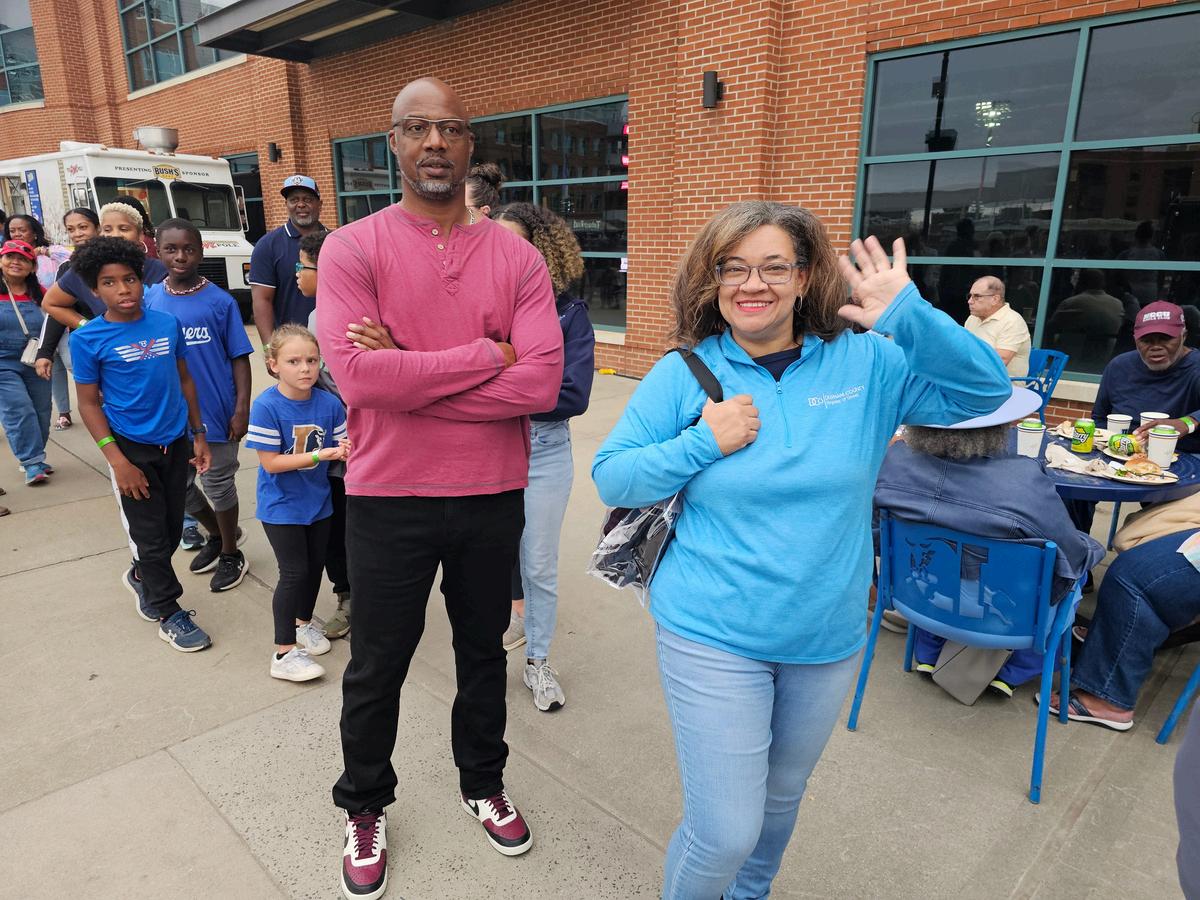

DCo employees and their families enjoyed a fun night at the ballpark, cheering on the Durham Bulls as they scored a big win over the Norfolk Tides!







Human Resources brought the fun with a week full of learning, laughter, snacks, and stress relief – giving employees the perfect excuse to press pause and celebrate all the hard work we do every day!







